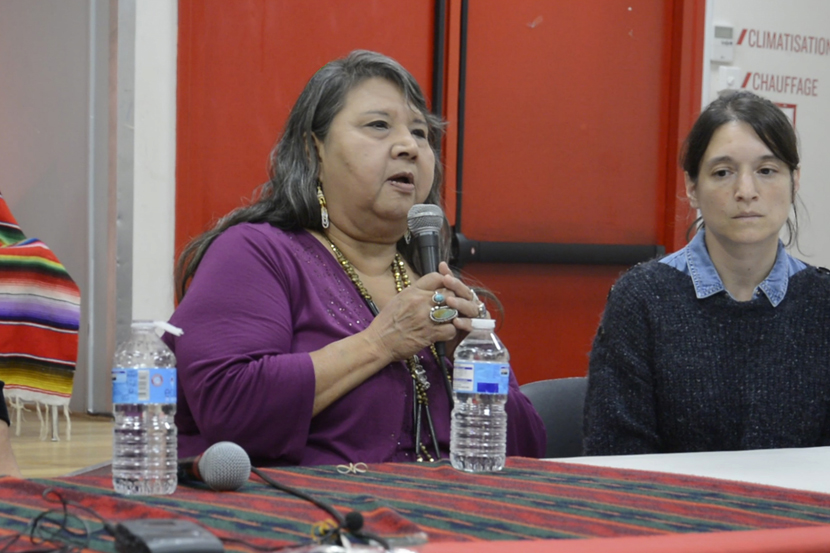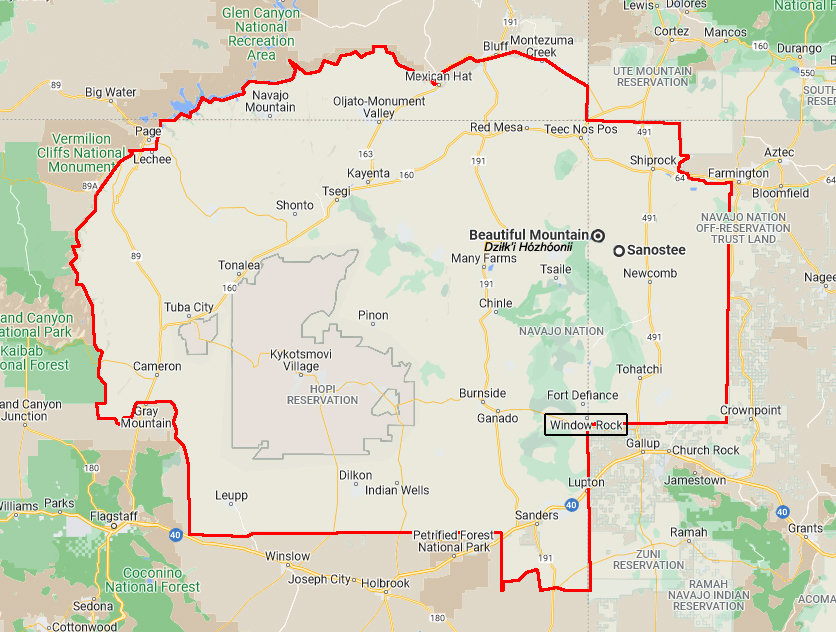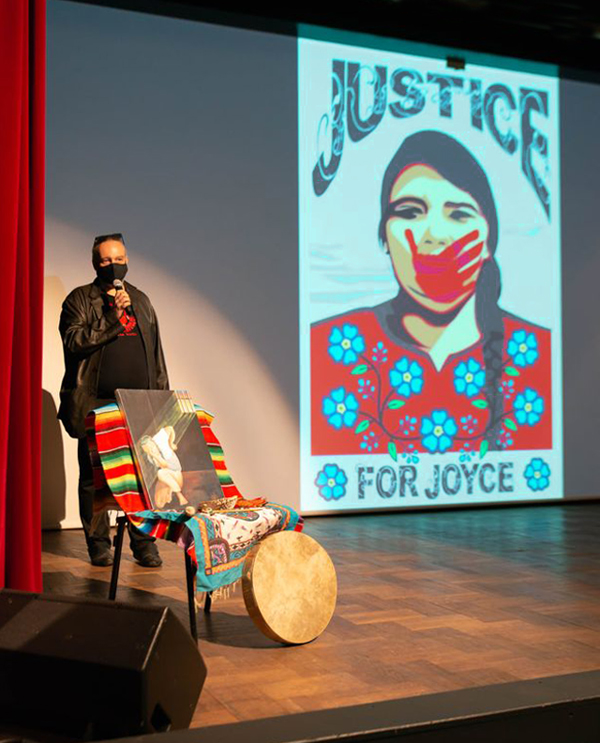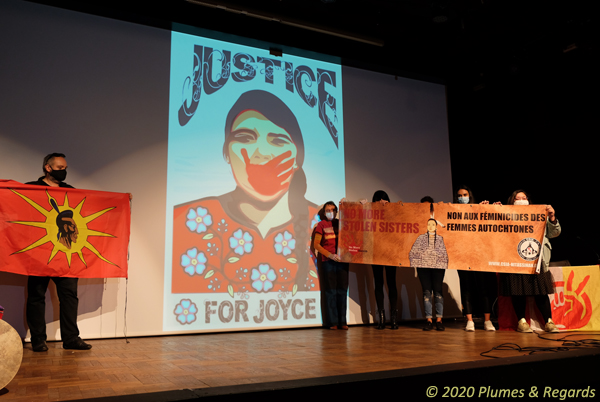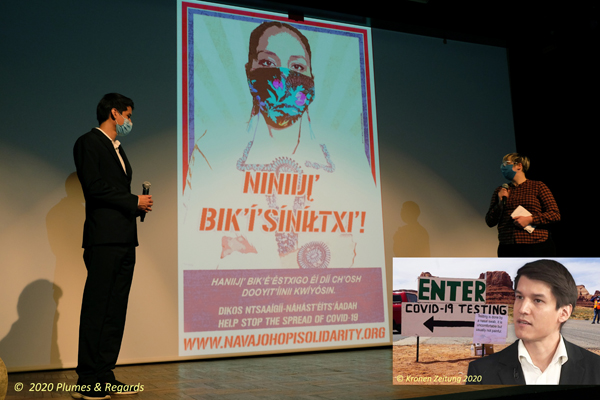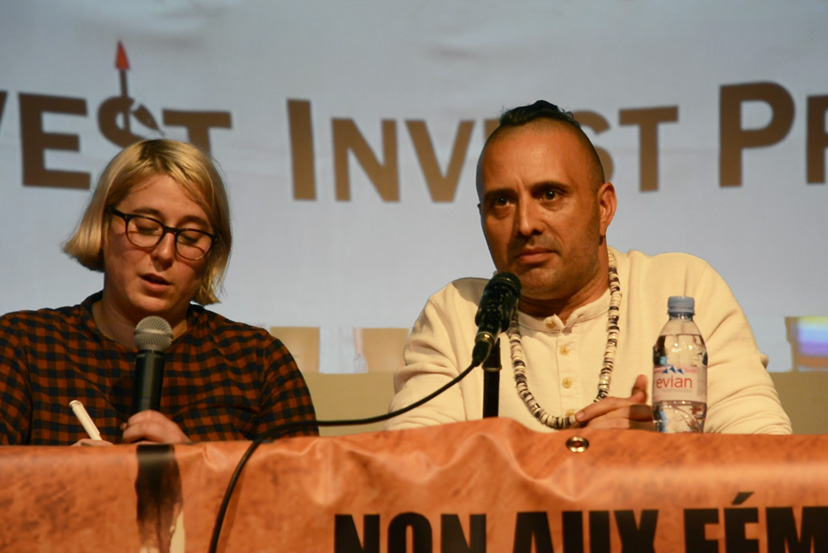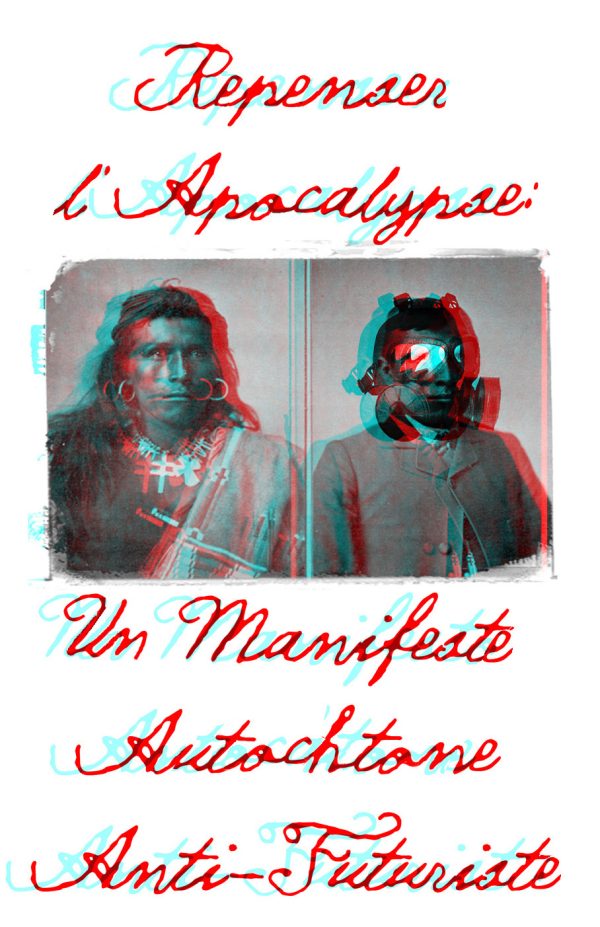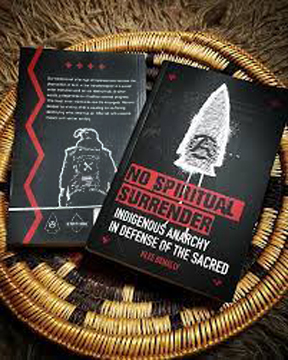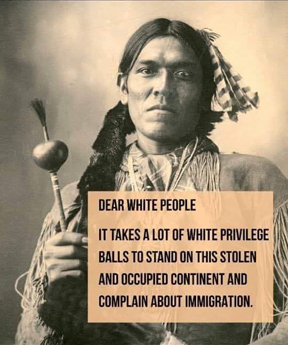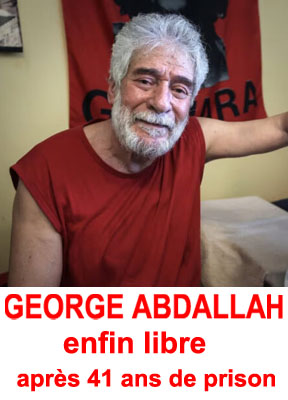Day of Solidarity, October 16, 2022
Traduction Christine Prat, CSIA-Nitassinan
En français
Also published on Censored News
KATHY PELTIER, ABOUT LEONARD PELTIER
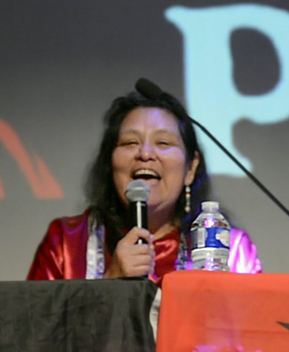 “I just introduced myself in my language. My name is Kathy Peltier, I am enrolled member of the Navajo Tribe, I am also Dakota and Anishinaabe. I am the youngest daughter of Leonard Peltier. I was two-years-old at Fargo, North Dakota, at the trial, when I got to see my dad. I don’t remember any of that but I do know that we have been keeping struggling, as his kids we’ve been struggling all our lives, trying to get a release for our dad. We, our generation, we need to let people know who he is, who is Leonard Peltier. You have to go to https://whoisleonardpeltier.info.
“I just introduced myself in my language. My name is Kathy Peltier, I am enrolled member of the Navajo Tribe, I am also Dakota and Anishinaabe. I am the youngest daughter of Leonard Peltier. I was two-years-old at Fargo, North Dakota, at the trial, when I got to see my dad. I don’t remember any of that but I do know that we have been keeping struggling, as his kids we’ve been struggling all our lives, trying to get a release for our dad. We, our generation, we need to let people know who he is, who is Leonard Peltier. You have to go to https://whoisleonardpeltier.info.
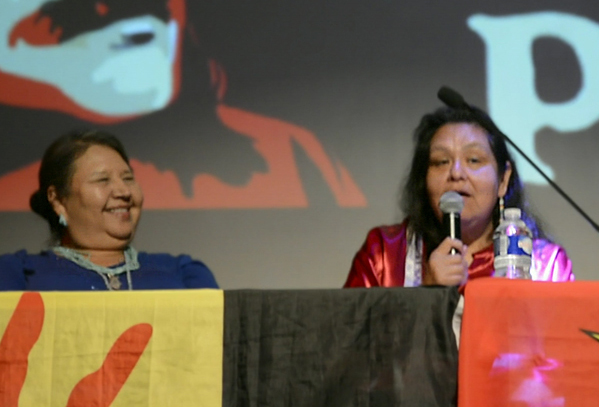 “At the moment, we are doing a Long Walk from Minneapolis, Minnesota, to Washington D.C., November 11. It’s a Walk to Justice for Leonard Peltier, or Leonard Peltier Walk to Justice. So, the struggle has been started and we are still trying to meet senators of the US Congress, even trying to meet with President Biden. So, if you can go to our website, you can just follow them, or donate if you could, for the walkers. And I’ll be joining on October 28, in Pittsburg. Thank you.”
“At the moment, we are doing a Long Walk from Minneapolis, Minnesota, to Washington D.C., November 11. It’s a Walk to Justice for Leonard Peltier, or Leonard Peltier Walk to Justice. So, the struggle has been started and we are still trying to meet senators of the US Congress, even trying to meet with President Biden. So, if you can go to our website, you can just follow them, or donate if you could, for the walkers. And I’ll be joining on October 28, in Pittsburg. Thank you.”
JEAN ROACH, LAKOTA MINICONJOU, ABOUT WOUNDED KNEE – 1890 AND 1973 – LEONARD PELTIER, STANDING ROCK
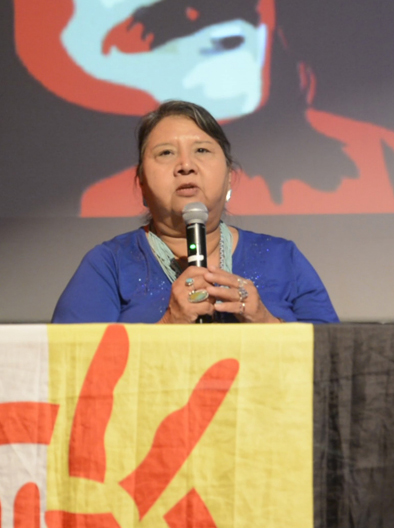 “I am Jean Roach, from the Lakota Miniconjou Tribe, and I came to talk to you about Leonard Peltier. What happens to Leonard Peltier is an example of what has been happening to our Indigenous Nations for generations. It started way back at first contact, when the non-Natives came over and decided to take our lands because we were not Christians.
“I am Jean Roach, from the Lakota Miniconjou Tribe, and I came to talk to you about Leonard Peltier. What happens to Leonard Peltier is an example of what has been happening to our Indigenous Nations for generations. It started way back at first contact, when the non-Natives came over and decided to take our lands because we were not Christians.
“One of the things they do use against us is stereotypes. And a long time ago, in the 1800s, they used, not only the Doctrine of Discovery, but the stereotypes. When they massacred our people at Wounded Knee, they presented them in the media as less than human. One of the statements made by the Cavalry was that the reason for killing innocent women and children and elders, and babies – they were asked specifically ‘why did you murder babies or massacred’, and their answer was that ‘nits make lice’. So, they stereotyped us in the media as disposable. Our people were attacked because we were in prayer, and we were praying the Ghost Dance and dancing. Praying for the buffalo and all the good things like before the non-Natives came.
“When the American Indian Movement took over Wounded Knee, they used the same tactics because it was a revival of the genocide against our people where our ceremonies were all banned. Every time we pray, our people are attacked and it’s been shown all the time through the massacres. And it was the same with Wounded Knee, when the AIM was labelled as militant and guerillas, all kind of names.
“The American government also used a program called COINTELPRO that was used against AIM and which targeted members or disposed of them.
“1975 would be called the reign of terror, on the Pine Ridge Reservation. Anybody that was related or connected to the American Indian Movement were targets of violence. When Peltier was on Oglala, he was asked by the elders and the community to come there for protection. Anybody that prayed in our Lakota way were targets. So, when the FBI came that day, they came in unmarked cars and not wearing uniforms, and we never knew who they were.
“Leonard Peltier’s co-defendants were charged with murder and went to court where they were acquitted on basis of self-defense. The only person who got charges was Leonard, and he was in Canada. United States went up there and broke international law to bring him back to the United States. And it’s part of a bigger plan, that colonization and genocides on our people. And a lot of it will lead to men going to prison. Or children being taken. And we all know about the catholic church and the many graves that were found in Canada.
“Leonard Peltier had no choice, he was a scapegoat immediately, when the United States government made sure that he went to prison. It didn’t matter what the truth was.
“Indigenous people are being attacked because of our beliefs systems, which protect our Mother Earth. So, when Standing Rock happened, many people came to help up to North Dakota and they found out what it felt to be on the front line and being attacked while on prayer.
“The COINTELPRO program exists till today and they used it on the Standing Rock water protectors, through the Black Water security company.
“Leonard Peltier was also a boarding school victim. It’s also part of the way Indigenous families have been attacked, and how we are trying to restore our roles. We feel that the reason the United States government don’t want to release Leonard Peltier, after 47 years, is because they don’t want to honor Indigenous people because of our beliefs system which is opposite to the way they want to rape our Mother Earth.
“Lona here is a survivor of the boarding schools so I’ll let her tell her story.”
LONA KNIGHT, LAKOTA MINICONJOU, ABOUT STANDING ROCK
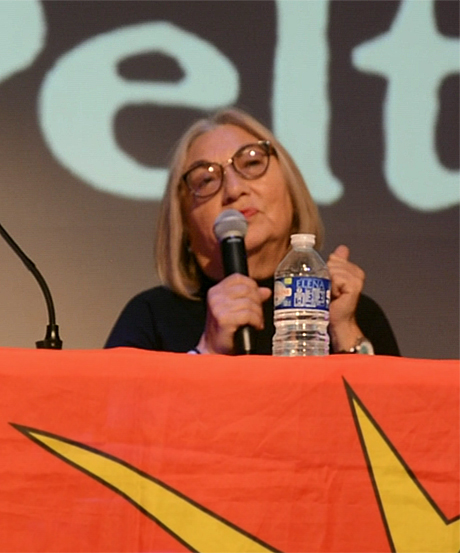 “I would like to say something about Standing Rock. So many people came, so many nations, to support, and found out how hard it is to be on the frontline and take the punches that the police came to give. Our enemy comes down the same way every time. It was Wounded Knee, in 1890, when they took away everyone’s weapon and they took away awls that women use to make their moccasins, they took everything that could be a weapon. And then they brought their machine gun and shot the Lakota people. The military that were there, I think that were 8 congressional medals of honor given, at that time. And, there is a project that we want, we want those medals to be rescinded and taken away from those people, because it was outright murder. At the time, the circle was broken, many of our wisdom keepers with knowledge of ceremony and songs went away, that day. And through the boarding schools and colonization, our people were forbidden to do our ceremonies for hundred years.
“I would like to say something about Standing Rock. So many people came, so many nations, to support, and found out how hard it is to be on the frontline and take the punches that the police came to give. Our enemy comes down the same way every time. It was Wounded Knee, in 1890, when they took away everyone’s weapon and they took away awls that women use to make their moccasins, they took everything that could be a weapon. And then they brought their machine gun and shot the Lakota people. The military that were there, I think that were 8 congressional medals of honor given, at that time. And, there is a project that we want, we want those medals to be rescinded and taken away from those people, because it was outright murder. At the time, the circle was broken, many of our wisdom keepers with knowledge of ceremony and songs went away, that day. And through the boarding schools and colonization, our people were forbidden to do our ceremonies for hundred years.
“So, through many people’s dreams, our songs come back and ceremonies come back to us.
“I was living in Hawaii, at the time of Standing Rock, and every morning I woke up really early, I got on Facebook and Myron Dewey – ‘Rest in Peace, Brother – was there with his drones in the camp, and we could see what happened. In the camp, every morning he would do this with prayers and songs. It was very powerful for me to see it in that way and to be connected to it – a lot of my brothers and sisters were there, and I felt so connected to them.
“It really hurt me when I saw the police drag people out of the purification ceremony. I have seen them dragged out. I have seen them on the videos.
“So, I know the movement is strong, and I know it’s carrying on, people are there, there are still frontlines. But a lot of our people are suffering from PTSD.
“Because of time constraints, I am going to pass the mike. Thank you for hearing me, I love you all, stand strong, and I pray that Leonard Peltier will be released soon.”
Journée du 16 octobre 2022
Traduction Christine Prat, CSIA-Nitassinan
In English
Also published on Censored News
KATHY PELTIER PARLE DE SON PÈRE, LEONARD PELTIER
 « Je viens de me présenter dans ma langue. Je m’appelle Kathy Peltier, je suis membre de la Tribu Navajo, je suis aussi Dakota et Anishinaabe. Je suis la plus jeune fille de Leonard Peltier. J’avais deux ans, à Fargo, dans le Dakota du Nord, au procès, où j’ai pu voir mon père. Je ne m’en souviens pas, mais ce que je sais c’est que nous avons toujours lutté, en tant que ses enfants, nous avons lutté toute notre vie, pour essayer de faire libérer notre papa. Nous, notre génération, avons besoin de faire savoir aux gens qui il est, qui est Leonard Peltier. Pour savoir, vous devez aller sur le site https://whoisleonardpeltier.info.
« Je viens de me présenter dans ma langue. Je m’appelle Kathy Peltier, je suis membre de la Tribu Navajo, je suis aussi Dakota et Anishinaabe. Je suis la plus jeune fille de Leonard Peltier. J’avais deux ans, à Fargo, dans le Dakota du Nord, au procès, où j’ai pu voir mon père. Je ne m’en souviens pas, mais ce que je sais c’est que nous avons toujours lutté, en tant que ses enfants, nous avons lutté toute notre vie, pour essayer de faire libérer notre papa. Nous, notre génération, avons besoin de faire savoir aux gens qui il est, qui est Leonard Peltier. Pour savoir, vous devez aller sur le site https://whoisleonardpeltier.info.
 « En ce moment, nous effectuons une Longue Marche de Minneapolis, dans le Minnesota, jusqu’à Washington D.C., le 11 novembre 2022. C’est une Marche vers la Justice pour Leonard Peltier, ou Leonard Peltier Walk to Justice. Donc, la lutte a commencé et nous essayons toujours de rencontrer des sénateurs du Congrès des Etats-Unis, nous essayons même de rencontrer le Président Biden. Alors, si vous pouvez aller sur notre site web, vous pouvez simplement les suivre, ou, si vous pouvez, faire des dons, pour les marcheurs. Et je les rejoindrai le 28 octobre, à Pittsburg. Merci. »
« En ce moment, nous effectuons une Longue Marche de Minneapolis, dans le Minnesota, jusqu’à Washington D.C., le 11 novembre 2022. C’est une Marche vers la Justice pour Leonard Peltier, ou Leonard Peltier Walk to Justice. Donc, la lutte a commencé et nous essayons toujours de rencontrer des sénateurs du Congrès des Etats-Unis, nous essayons même de rencontrer le Président Biden. Alors, si vous pouvez aller sur notre site web, vous pouvez simplement les suivre, ou, si vous pouvez, faire des dons, pour les marcheurs. Et je les rejoindrai le 28 octobre, à Pittsburg. Merci. »
JEAN ROACH, LAKOTA MINICONJOU, PARLE DE WOUNDED KNEE – 1890 ET 1973 – DE LEONARD PELTIER, DE STANDING ROCK
 « Je m’appelle Jean Roach, de la Tribu Lakota Miniconjou, et je suis venue pour vous parler de Leonard Peltier. Ce qui arrive à Leonard est un exemple de ce qui arrive à nos Nations Autochtones depuis des générations. Ça a commencé il y a longtemps, lors du premier contact, quand des non-Autochtones sont venus et ont décidé de prendre nos terres parce que nous n’étions pas chrétiens.
« Je m’appelle Jean Roach, de la Tribu Lakota Miniconjou, et je suis venue pour vous parler de Leonard Peltier. Ce qui arrive à Leonard est un exemple de ce qui arrive à nos Nations Autochtones depuis des générations. Ça a commencé il y a longtemps, lors du premier contact, quand des non-Autochtones sont venus et ont décidé de prendre nos terres parce que nous n’étions pas chrétiens.
« Une des choses qu’ils utilisent contre nous, sont les stéréotypes. Et il y a longtemps, dans les années 1800, ils utilisaient non seulement la Doctrine de la Découverte, mais aussi les stéréotypes. Quand ils ont massacré des gens de notre peuple à Wounded Knee, ils les ont présentés dans les médias comme moins qu’humains. L’une des déclarations faites par la Cavalerie concernait la raison pour laquelle ils avaient tué des innocents, femmes, enfants, vieillards – on leur avait spécifiquement demandé ‘pourquoi avez-vous assassiné ou massacré des bébés’, et leur réponse fut que ‘les lentes donnent des poux’. Ainsi, ils nous stéréotypaient dans les médias comme étant à jeter. Nos gens avaient été attaqués parce qu’ils étaient en train de prier, et nous priions par la Danse du Fantôme et dansions. Nous priions pour le bison et toutes les choses bonnes, tel que dans les temps d’avant l’arrivée des non-Autochtones.
« Quand l’American Indian Movement prit Wounded Knee, ils ont utilisé les mêmes tactiques, parce que c’était une résurgence du génocide contre notre peuple, quand toutes nos cérémonies ont été bannies. Chaque fois que nous prions, notre peuple est attaqué et ça a été prouvé chaque fois par les massacres. Et ce fut la même chose à Wounded Knee, les membres de l’AIM ont été qualifié d’activistes violents et de guérilleros, et toutes sortes de noms du même genre.
« Le gouvernement américain a aussi utilisé un programme appelé COINTELPRO, qui était utilisé contre l’AIM et visait ses membres, ou les éliminait.
« La période de 1975 fut appelée le règne de la terreur, dans la Réserve de Pine Ridge. Quiconque était en lien ou avait des connexions avec l’American Indian Movement était une cible pour la violence. Quand Peltier était chez les Oglala, c’était les anciens et la communauté qui lui avaient demandé de venir pour les protéger. Quiconque priait selon notre mode Lakota était une cible. Puis, quand le FBI est venu, ce jour-là, les agents étaient dans des voitures banalisées et ne portaient pas d’uniformes. Nous ne pouvions absolument pas savoir qui ils étaient.
« Les co-accusés de Leonard Peltier furent accusés de meurtre, puis sont passés au tribunal où ils ont été acquittés pour légitime défense. Le seul qui était encore accusé était Leonard, et il était au Canada. Les Etats-Unis sont allés jusque là-bas et ont violé la loi internationale pour le ramener aux Etats-Unis. Et ça fait partie d’un plan bien plus large, la colonisation et le génocide de notre peuple. Et ça conduit souvent des hommes en prison. Ou à ce que des enfants soient enlevés. Et nous savons tous ce que fait l’église catholique et que de nombreuses tombes ont été trouvées au Canada.
« Leonard Peltier n’avait pas le choix, il fut immédiatement un bouc émissaire, quand le gouvernement des Etats-Unis s’est assuré qu’il aille en prison. Ce qu’était la vérité n’avait pas d’importance.
« Les Autochtones sont attaqués à cause de notre système de croyances, qui protège Notre Mère la Terre. Ainsi, quand les évènements de Standing Rock se sont produits, beaucoup de gens sont venus pour aider dans le Dakota du Nord, et ils ont découvert ce que ça faisait d’être sur le front et d’être attaqué au cours de la prière.
« Le programme COINTELPRO existe toujours aujourd’hui, et ils l’ont utilisé contre les Protecteurs de l’Eau à Standing Rock, par l’intermédiaire de la firme de sécurité Black Water.
« Leonard Peltier était aussi une victime des pensionnats. Ça fait partie des moyens par lesquels les familles Autochtones ont été attaquées, et comment nous essayons de faire revivre nos rôles. Nous avons le sentiment que la raison pour laquelle le gouvernement des Etats-Unis ne veut pas libérer Leonard Peltier, au bout de 47 ans, est qu’ils ne veulent pas respecter les Autochtones à cause de notre système de croyances, qui est à l’opposé de la façon dont ils violent Notre Mère la Terre.
« Lona, ici présente, est une survivante des pensionnats, et je vais la laisser raconter son histoire. »
LONA KNIGHT, LAKOTA MINICONJOU, PARLE DE STANDING ROCK
 « Je voudrais dire quelques mots sur Standing Rock. Tant de gens sont venus, tant de nations, pour les soutenir, et ont découvert à quel point c’est dur d’être sur la ligne de front et de recevoir les coups que la police est venue pour distribuer. Notre ennemi arrive toujours de la même façon, chaque fois. C’était le cas à Wounded Knee, en 1890, quand ils ont saisi toutes les armes et même pris les alènes que les femmes utilisaient pour faire leurs mocassins, ils ont pris tout ce qui pouvait servir d’arme. Puis ils ont amené leur mitrailleuse et ont tiré sur les Lakota. Des militaires qui y étaient, je crois que ce sont 8 médailles d’honneur du Congrès qui leur ont été données, à l’époque. Et nous avons un projet qui nous tient à cœur, nous voulons que ces médailles soient révoquées et reprises à ces gens, parce qu’il s’agissait de purs assassinats. À l’époque, le cercle a été brisé, beaucoup de nos gardiens de la sagesse, leur connaissance des cérémonies et des chants, sont partis, ce jour-là. Et par les pensionnats et la colonisation, il a été interdit à nos peuples de pratiquer nos cérémonies pendant cent ans.
« Je voudrais dire quelques mots sur Standing Rock. Tant de gens sont venus, tant de nations, pour les soutenir, et ont découvert à quel point c’est dur d’être sur la ligne de front et de recevoir les coups que la police est venue pour distribuer. Notre ennemi arrive toujours de la même façon, chaque fois. C’était le cas à Wounded Knee, en 1890, quand ils ont saisi toutes les armes et même pris les alènes que les femmes utilisaient pour faire leurs mocassins, ils ont pris tout ce qui pouvait servir d’arme. Puis ils ont amené leur mitrailleuse et ont tiré sur les Lakota. Des militaires qui y étaient, je crois que ce sont 8 médailles d’honneur du Congrès qui leur ont été données, à l’époque. Et nous avons un projet qui nous tient à cœur, nous voulons que ces médailles soient révoquées et reprises à ces gens, parce qu’il s’agissait de purs assassinats. À l’époque, le cercle a été brisé, beaucoup de nos gardiens de la sagesse, leur connaissance des cérémonies et des chants, sont partis, ce jour-là. Et par les pensionnats et la colonisation, il a été interdit à nos peuples de pratiquer nos cérémonies pendant cent ans.
« Mais, à travers les rêves de beaucoup de gens, nos chants reviennent, et nos cérémonies nous reviennent.
« Je vivais à Hawaii à l’époque de Standing Rock, et tous les matins je me réveillais très tôt, j’allais sur Facebook, et Myron Dewey – Repose En Paix, mon Frère – était là, avec ses drones, dans le camp, et nous pouvions voir ce qui se passait. Dans le camp, tous les matins, il montrait les prières et les chants. Pour moi, c’était très puissant de les voir par ce moyen et d’être en connexion avec eux – beaucoup de mes frères et sœurs étaient là-bas, et je me sentais connectée à eux.
« Ça m’a fait beaucoup de mal de voir la police tirer les gens hors de la cérémonie de purification. Je les ai vus se faire trainer. Je les ai vus sur les vidéos.
« Donc, le mouvement est fort, et je sais que ça continue, le gens y sont, il y a toujours des fronts. Mais beaucoup de nos gens souffrent de stress post-traumatique.
« Vu les contraintes de temps, je vais passer le micro. Merci de m’avoir écoutée, je vous aime tous, soyez fort, et je prie pour que Leonard Peltier soit libéré bientôt. »
Jean Roach,
Paris, CICP
15 octobre 2022
Enregistrement et traduction Christine Prat, CSIA-Nitassinan
In English
Le 15 octobre, la veille de la 42ème Journée de Solidarité du CSIA, Mitch Walking Elk a donné un concert au CICP, et d’autres invitées se sont adressées au public avant le concert. Jean Roach – témoin à 14 ans de ce terrible jour de juin 1975, où deux agents du FBI en civil ont été tués au cours d’une fusillade, qui a conduit à la condamnation à vie de Leonard Peltier, prouvé innocent – raconte la vraie histoire de ce drame.
(Voir vidéo en bas de l’article)
Christine Prat
« Maintenant, Leonard est en prison depuis 47 ans. Et nous tentons toutes les voies possibles pour que le Président Biden lui accorde la clémence. Tout le monde nous demande ce que nous voudrions que les gens fassent. Ce que nous demandons, c’est que tous, que vous soyez une personne, une organisation ou un membre d’un gouvernement, écriviez des lettres de soutien demandant au Président Biden d’accorder la clémence de l’exécutif.
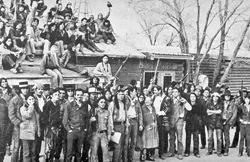 « Et maintenant, parlons de cette époque, de 1975, quand j’avais 14 ans et que nous avons été attaqués par le FBI. C’était la période après Wounded Knee, 1973, quand l’AIM [American Indian Movement] avait repris Wounded Knee. Nous l’appelons le règne de la terreur, au cours duquel plus de 60 personnes ont été tuées, dans la Réserve Indienne de Pine Ridge. Quiconque était associé à l’AIM était une cible pour le gouvernement tribal corrompu, qui avait des milices GOON, qui attaquaient l’AIM ou les gens qui effectuaient des cérémonies. Il ne voulait rien avoir à faire avec les gens traditionnels, le Président tribal.
« Et maintenant, parlons de cette époque, de 1975, quand j’avais 14 ans et que nous avons été attaqués par le FBI. C’était la période après Wounded Knee, 1973, quand l’AIM [American Indian Movement] avait repris Wounded Knee. Nous l’appelons le règne de la terreur, au cours duquel plus de 60 personnes ont été tuées, dans la Réserve Indienne de Pine Ridge. Quiconque était associé à l’AIM était une cible pour le gouvernement tribal corrompu, qui avait des milices GOON, qui attaquaient l’AIM ou les gens qui effectuaient des cérémonies. Il ne voulait rien avoir à faire avec les gens traditionnels, le Président tribal.
« Grand-maman et Grand-papa Jumping Bull avaient demandé à Leonard Peltier et d’autres membres de l’AIM d’aider à les protéger, vu qu’ils tentaient de s’éloigner du gouvernement tribal et de la communauté Oglala.
« Ce que nous faisions essentiellement, c’était d’aider une communauté. Nous aménagions des jardins, pour aider Grand-maman et Grand-papa. Ils venaient juste de célébrer leur 50ème Anniversaire de mariage. Et pour tout ce dont ils avaient besoin, nous étions là. Et Leonard et les autres étaient là pour protéger. Parce que nous étions toujours des cibles.
« Le jour où le FBI est venu dans notre camp, nous ne savions pas qui ils étaient. Ils sont arrivés dans des voitures banalisées et ne portaient pas d’uniformes, donc nous ne pouvions pas savoir qui ils étaient. S’ils étaient de la milice GOON ou autre. Et Leonard Peltier, Dino Butler, Bob Robideau et les autres nous protégeaient. Ils nous ont sauvé la vie. Alors, nous avons perdu notre frère Joe Stuntz, au moment où les agents du FBI étaient tués. Et Leonard Peltier, Dino Butler, Bob Robideau et un autre homme furent accusés des meurtres des agents du FBI. Ils se livrèrent à des fouilles illégales, entrèrent de force chez les gens, recherchant des gens qui s’étaient échappés, c’est-à-dire nous, principalement, et nous avions tous moins de 18 ans, la majorité légale là-bas.
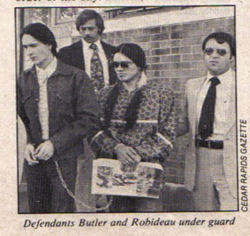 « Alors, Dino Butler et Bob Robideau passèrent au tribunal, où ils furent acquittés pour légitime défense, vu que le FBI avait attaqué notre camp. Personne n’a été condamné, à part Leonard Peltier, qui était au Canada à ce moment-là, et risquait l’extradition.
« Alors, Dino Butler et Bob Robideau passèrent au tribunal, où ils furent acquittés pour légitime défense, vu que le FBI avait attaqué notre camp. Personne n’a été condamné, à part Leonard Peltier, qui était au Canada à ce moment-là, et risquait l’extradition.
« Le gouvernement des Etats-Unis a à nouveau violé la loi. Le gouvernement canadien exigeait un témoin oculaire avant de décider d’extrader. Ils menacèrent une Lakota, du nom de Myrtle Poor Bear. Ils l’ont menacée de mort et de lui enlever ses enfants si elle ne signait pas trois affidavits utilisés au Canada. Quand nous avons entendu parler de Myrtle Poor Bear, c’était vraiment triste, parce qu’elle avait été menacée comme ça. Le plus triste était que personne ne savait qui elle était. Elle n’avait aucun lien avec Leonard et elle prétendait être sa petite amie, mais elle avait été menacée et malmenée au Canada.
 « Quand est venu le temps qu’il passe en jugement, il n’est pas passé devant le même tribunal que Dino et Bob, qui y avaient été acquittés. Ils se sont arrangés pour l’envoyer dans le Dakota du Nord, à un juge connu comme raciste.
« Quand est venu le temps qu’il passe en jugement, il n’est pas passé devant le même tribunal que Dino et Bob, qui y avaient été acquittés. Ils se sont arrangés pour l’envoyer dans le Dakota du Nord, à un juge connu comme raciste.
« Ce que je veux dire, c’est qu’ils ont menti immédiatement et ont continué depuis 47 ans, ceux du gouvernement des Etats-Unis. Ils ont violé les droits humains, les droits constitutionnels et les droits selon les traités. Tout cela parce qu’ils voulaient que quelqu’un paie et voulaient se venger.
« Il y a quatre semaines, tout le parti Démocrate des Etats-Unis a unanimement voté une résolution pour soutenir la libération de Leonard Peltier. Nous avons reçu plusieurs lettres de soutien, entretemps, et ça ne semble pas plaire au gouvernement des Etats-Unis. Nous espérons que les pays européens pourront faire pression sur Biden. Parce qu’il se présente, les Etats-Unis se présentent, comme les leaders des droits humains.
« Quand le COVID est arrivé, le gouvernement des Etats-Unis a traité les tribus, les Autochtones, différemment. Quand Leonard a contracté le COVID en prison, nous avions peur, étant donné qu’il a tellement de problèmes de santé. Il a 78 ans. Et quand il a été mis en quarantaine, il n’a pas été placé dans une unité médicale, malgré tous ses problèmes de santé, ils l’ont juste mis dans une cellule d’isolement et ne lui ont même pas donné d’eau. Jusqu’à aujourd’hui, nous avons essayé de lui trouver des soins médicaux, mais le système de la prison n’a jamais répondu aux gens qui ont le droit de demander une mise à jour ou au moins un rendez-vous médical pour voir dans quel état il est.
« Mais la chose que nous avons toujours dit – nous sommes allés aux Nations Unies à Genève – et tout ce que nous demandons est que le gouvernement des Etats-Unis dise la vérité, c’est tout. Nous ne voulons pas de traitement de faveur, nous voulons seulement qu’ils disent la vérité. C’est très simple.
« Il y aurait beaucoup plus à dire, je pourrais parler indéfiniment. »
JEAN ROACH TELLS ABOUT THE EVENTS SHE WITNESSED WHEN SHE WAS 14, EVENTS THAT LED TO LEONARD PELTIER’S LIFELONG SENTENCE
By Jean Roach
Paris, CICP,
October 15, 2022
Also published on Censored News
Recording and transcript Christine Prat, CSIA-Nitassinan
(See video below)
En français
The evening before CSIA-Nitassinan 42nd Day of Solidarity, Mitch Walking Elk sung at the CICP (International Center for Popular Cultures) and other guests addressed the audience before the show. Jean Roach told the story of that terrible day, in June 1975, when two FBI agents undercover were killed during a shoo-tout, which led to Leonard Peltier being sentenced for the murders, although he has long been proven innocent.
Christine Prat
“Right now, Leonard has been in prison for 47 years. And we are trying all avenues to have President Biden grant him his clemency. Everybody asks us what we would like people to do. What we’re asking is everybody, if you are a person, an organization or a government official, to write letters of support urging President Biden to grant executive clemency.
 “And now let’s talk about the time period of 1975, when I was 14-years-old and we were attacked by the FBI. The time period was after Wounded Knee 1973, when the American Indian Movement took over Wounded Knee. We call it the reign of terror, when over 60 people were killed on the Pine Ridge Indian Reservation. Anybody who was associated with the American Indian Movement were targets of the corrupt tribal government who had squads that would attack the American Indian Movement or people who were having ceremonies. He wouldn’t like to have anything to do with traditional people, the Chairman.
“And now let’s talk about the time period of 1975, when I was 14-years-old and we were attacked by the FBI. The time period was after Wounded Knee 1973, when the American Indian Movement took over Wounded Knee. We call it the reign of terror, when over 60 people were killed on the Pine Ridge Indian Reservation. Anybody who was associated with the American Indian Movement were targets of the corrupt tribal government who had squads that would attack the American Indian Movement or people who were having ceremonies. He wouldn’t like to have anything to do with traditional people, the Chairman.
“The grandma and grandpa Jumping Bull asked Leonard Peltier and other AIM members to help protect them, as they made a move to pull away from the tribal government and the community Oglala.
“What we were doing there was basically helping a community. We were building gardens, helping the grandpa and grandma. They were just celebrating their 50th anniversary. And whatever they needed done, we were there. And Leonard and the other guys were there for protection. Because we were always a target.
“On the day when the FBI came to our camp, we didn’t know who they were. They came in unmarked cars and they weren’t wearing uniforms, so we couldn’t tell who they were. If they were the GOON squads or who they were. So, Leonard Peltier, Dino Butler, Bob Robideau and the others protected us. They saved our lives. There we lost our brother Joe Stuntz, the moment they killed the FBI agents. And Leonard Peltier, Dino Butler and Bob Robideau and another man were charged for the murders of the FBI. They did illegal searches and they broke into the people’s home looking for the people that escaped, who were mostly us and we were all under the age of 18, the majority there.
 “So, Dino Butler and Bob Robideau went to court where they were acquitted on the basis of self-defense, for the FBI attacked our camp. No one was charged except for Leonard Peltier, who was in Canada and by then was facing extradition.
“So, Dino Butler and Bob Robideau went to court where they were acquitted on the basis of self-defense, for the FBI attacked our camp. No one was charged except for Leonard Peltier, who was in Canada and by then was facing extradition.
“Again, the United States government broke the law. The Canadian government wanted an eyewitness before they would extradite. They threatened a Lakota woman by the name of Myrtle Poor Bear. They threatened her with death and taking her kids away if she didn’t sign 3 affidavits that they used in Canada. When we heard about Myrtle Poor Bear, it was really sad because she was threatened like that. The saddest part is that nobody knew who she was. She had no connection to Leonard and she claimed to be his girlfriend, but she was used and abused in Canada.
 “So, when it came time for his court trial, he didn’t go to the same court as Dino and Bob, where they were acquitted. They made sure that they sent him to North Dakota to a known racist judge.
“So, when it came time for his court trial, he didn’t go to the same court as Dino and Bob, where they were acquitted. They made sure that they sent him to North Dakota to a known racist judge.
“My point is that immediately they lied and they have been doing so for 47 years, the United States government. They’ve been breaking the human rights, the constitutional rights and treaty rights. All because they want one person to pay for it and they want revenge.
“Four weeks ago, we got the whole Democratic party of the United States unanimously pass a resolution in support of Leonard Peltier’s release. We had several support letters over time, and it doesn’t seem to please the United States government. We’re hoping that the European countries will be able to put pressure on Biden. Because he represents himself, or the United States represent themselves, as human rights leaders.
“When COVID came, the United States government treated the tribes, Indigenous people differently. When Leonard caught COVID inside the prison, we were scared because he had so many health problems. He is 78-years-old. Again, when he was quarantined, he didn’t go to a medical unit, despite of all his health issues, they just put him in solitary cell and they didn’t even give him water. Until today, we have been trying to get medical care, but the prison system wouldn’t answer to the people that have the right to ask for his medical update or at least a medical appointment to see in what shape is body seems.
“But one of the things that we always say, we have been to the United Nations in Geneva and all we ask is for the United States government to tell the truth, that’s all. We don’t want special treatment, we just want them to tell the truth. It’s really simple. There is a lot more, you know, I can talk forever.”
Les Navajos, dont la réserve est déjà ravagée par la présence d’un millier de mines d’uranium abandonnées, d’anciennes mines de charbon à ciel ouvert sur Black Mesa, et plusieurs centrales au charbon parmi les plus polluantes des Etats-Unis, sont maintenant menacés par un projet d’hélium obtenu par fracturation hydraulique. Le 18 avril, ils ont tenté de protester auprès du Conseil de la Nation Navajo, à Window Rock, mais se sont vu refuser l’entrée. Le même jour, Eugénie Picos Rodriguez, membre du CSIA qui se trouve actuellement là-bas, a recueilli le témoignage d’un Diné, habitant la région où la fracturation est prévue, qui avait protesté à Window Rock le matin. Ci-dessous, le témoignage recueilli par Eugénie, et plus bas, l’article de Brenda Norrell, publié le même jour sur Censored News.
Christine Prat, CSIA-Nitassinan
Par Eugénie Picos Rodriguez, CSIA-Nitassinan
18 avril 2022
“Window Rock, Nation Navajo le 18 avril 2022:
Ce lundi matin avait lieu une manifestation en face du Council Chambers du gouvernement de la Navajo Nation. Les manifestants s’opposaient en projet en cours de fracturation des sols afin d’en extraire de l’hélium au sein des Chuska Mountain.
Ce collectif est regroupé sous le nom de “Dooda Helium”: non à l’hélium. Lundi après-midi, au sein du Musée de la Nation Navajo, j’ai recueilli le témoignage d’un des participants. Ce Diné, la cinquantaine, était présent avec ses parents et habite le territoire affecté par la fracturation d’hélium, dans les Monts Chuska: « Nous n’étions qu’une poignée de personnes…” Il semblait refléter un mélange de rage et de désespoir. Leur territoire va être directement affecté sous de multiples formes: la qualité de l’eau, de l’air, des sols. C’est irréversible. Il parlait, avait besoin de dire ce désespoir. « C’est un génocide culturel ». Pour lui le but est clair : transformer la réserve en « zone de risque industriel », rendue inhabitable par les pollutions de l’eau et de l’air, et expulser toute la population, rendre le territoire invivable, une zone sacrifiée. Pour lui, les politiciens Navajo ont tous été achetés, ainsi que le EPA (Environmental Protection Agency: institution en charge de la régulation des normes écologiques et du nettoyage des mines) : leurs tactiques est d’utiliser une carte des années 70 et de dire qu’ils n’y a pas d’habitations à proximité, pas de danger pour l’eau ou les habitants. Mais toute l’eau restante des nappes phréatiques va servir à la fracturation, contaminant de manière irrécupérable toute la réserve. Des politiciens achetés qui ne pensent pas au futur, au monde qu’ils vont laisser à leurs enfants. Tout comme pour Black Mesa : destruction pour du profit, avec soi-disant 1% des revenus générés pour la communauté. Il se demandait à quoi pouvait bien servir l’argent si la terre, le sol, l’air n’est plus respirable, plus habitable ?? Et au final, celleux subissant cette contamination ne perçoivent jamais aucune compensation. Ils souffrent de cancers, de maladies chroniques…
Il m’a également raconté que l’on ne pouvait pas se rendre à la réunion ce matin, qu’il fallait se joindre par google teams, via internet, plus en présentiel, mais que quand il essayait de commenter en ligne, il ne le laissait pas participer à la conversation. Aucune écoute, aucune attention.
Il y a déjà des animaux qui meurent à cause des fuites de gaz. Les ranchers mettent des barrières autour et puis c’est tout… il a parlé de la zone des 4 corners, de la pollution. Du passé qui se répète encore et encore…
Les conséquences de la fracturation amènent aussi une augmentation des tremblements de terre. Les explosions répétées en profondeur sur la zone amènent une augmentation drastique des tremblements de terre. Il faisait le parallèle avec une personne à qui ont injectait de force du poison dans tout le corps « c’est ce qu’ils font à notre Mère la terre ».
Avant, Window Rock était un bassin plein d’eau du fleuve Colorado. C’est ce que sa mère lui racontait. Biden a signé tous les papiers pour la fracturation d’hélium, car ça fait soi-disant partie de l’agenda « vert », de la transition hors de l’énergie fossile.
Une énergie verte qui continue à se faire sur un territoire sacrifié et au dépend de populations présentes depuis des millénaires. Encore une fois, la Nation Navajo est une colonie extractiviste où aucune communauté n’est consultée. Le “diviser pour mieux régner” continue à s’appliquer, encore et encore…”
DES NAVAJOS PROTESTENT CONTRE DE NOUVELLES MINES (HÉLIUM…) ET EXPRIMENT LE BESOIN DE VRAIES SOLUTIONS POUR LE CHANGEMENT CLIMATIQUE
Des Anciens Navajo se sont vu refuser l’entrée à la session de printemps du Conseil de la Nation Navajo, ce 18 avril. Des manifestants Diné [Navajo] s’opposaient à l’ouverture d’une nouvelle mine d’hélium sur la montagne sacrée appelée Dziłkʼi Hózhóonii / Beautiful Mountain. Alors que les Navajos manquent d’eau et d’aide pour en transporter, le Conseil Navajo a l’intention de donner un demi-million de dollars à une école chrétienne privée. Des Diné se sont alignés devant le bâtiment des finances tribales, ayant désespérément besoin de fonds. Le gouvernement Navajo a reçu 2,1 milliards de dollars des fonds fédéraux pour les victimes du virus, mais il ne les a pas distribués. Jusqu’à maintenant, 1741 Navajos sont décédés du COVID-19.
Par Brenda Norrell
Censored News
18 avril 2022
Images Marley Shebala
Traduction Christine Prat
En ce moment, devant la Chambre du Conseil de la Nation Navajo, à Window Rock, des Diné s’opposent à une nouvelle mine d’hélium sur la Montagne Sacrée, Beautiful Mountain, à Sanostee.
Les Diné réclament de vraies solutions pour le changement climatique et demandent du soutien d’urgence pour les victimes d’agressions sexuelles et de nouvelles mesures pour rechercher les Diné disparues ou assassinées.
« Nous sommes là pour protéger notre précieuse Mère la Terre ; nous ne voulons pas que Notre Mère soit détruite par plus de pollution due à des émissions et à la destruction potentielle de nos réserves d’eau » ont dit dans une déclaration écrite les organisateurs de la manifestation d’aujourd’hui.
Un Ancien Diné, présent sur l’une des photos, a été renvoyé, à la porte de la session de printemps du Conseil de la Nation Navajo.
Au cours de son reportage en direct, la journaliste Diné/Zuni Marley Shebala a, elle aussi, été renvoyée parce qu’elle « n’était pas sur la liste ». Marley Shebala est reporter dans la capitale Navajo depuis 40 ans.
La session de printemps du Conseil a commencé aujourd’hui. L’agenda inclut un don d’un demi-million de dollars à une école privée chrétienne.
Le gouvernement Navajo a reçu, selon la Loi sur le Plan de Sauvetage Américain (ARPA), des fonds pour remédier aux dégâts du virus il y a un an, mais n’a pas distribué les 2,1 milliards de dollars.
À ce jour, 1741 Diné sont décédés du COVID-19. Beaucoup de Diné ont besoin d’aide pour transporter de l’eau et ne reçoivent aucune aide du gouvernement Navajo pour cela.
Par Sylvain Duez-Alessandrini, CSIA-Nitassinan (English below)
Journée Internationale de Solidarité
10 octobre 2020
Enregistrement Pascal Grégis, CSIA-Nitassinan
L’année dernière, l’Association avait dédié la Journée aux luttes des femmes Autochtones. Aujourd’hui, nous allons rendre un hommage, dans le cadre de ‘Justice for Joyce’.
Ce qui s’est passé, c’est qu’une jeune Atikamekw, qui s’appelait Joyce Echaquan, originaire de Manawan, au Québec, est décédée, au Canada, par manque de soins et soins inappropriés, dans le système hospitalier. Avant de mourir, elle a filmé ce qui s’est passé. Le personnel médical tient des propos abjects, ce qui montre le racisme systémique au Canada. Donc, nous voulions commencer cette Journée, puisqu’il y a depuis hier, aujourd’hui et jusqu’au lundi 12, des mobilisations dans tout le Québec pour dénoncer le féminicide des femmes Autochtones et demander justice pour Joyce. Donc, nous allons commencer, si vous le voulez bien, par une minute de silence et je remercie la délégation Autochtone de Guyane de s’associer à cet évènement. [Minute de silence].
Merci beaucoup, merci pour cet hommage. Notre Association va envoyer à la communauté de Joyce les photos qui ont été prises aujourd’hui, ainsi qu’à sa famille et aux différentes organisations de femmes Autochtones du Québec qui se mobilisent pour que la justice soit rendue, et que la justice soit rendue aussi pour les femmes Autochtones disparues et assassinées au Canada et ailleurs. Encore merci pour cette minute de silence et d’hommage.
By Sylvain Duez-Alessandrini, CSIA-Nitassinan
International Day of Solidarity with the Natives of the Americas
October 10, 2020
Recording by Pascal Grégis, CSIA-Nitassinan
Translation by Christine Prat, CSIA-Nitassinan
Last year, our Association dedicated the Day to Native American Women struggles. Today, we will pay a tribute, as part of the movement ‘Justice for Joyce’.
What happened is that a young Atikamekw, called Joyce Echaquan, from Manawan, Quebec, Canada, died of lack of care and improper care in a hospital. Before she died, she filmed what was happening. The medical staff pronounced heinous words, that clearly show the systemic racism in Canada. Thus, we want to begin this Day – as since yesterday, today and until Monday 12 October, people mobilize in whole Quebec to expose the murders of Native women and demand justice for Joyce – thus, we shall start with a minute of silence, and I wish to thank the Indigenous delegation from French Guiana for joining us for this event. [One minute of silence].
Thank you very much for this tribute. Our association will send photos taken today to Joyce’s community, as well as to her family and to the different organizations of Indigenous women in Quebec, mobilizing to demand justice for murdered and disappeared Indigenous women, in Canada and elsewhere. Thank you again for that minute of silence.
On October 10th, 2020, in Paris, the CSIA-Nitassinan held its annual Solidarity Day. One of the guests was Stefan Yazzie Herbert, Austrian/Navajo. Interesting story about identity and about European romantic prejudices on Native Americans. His mother is Navajo and his two clans are: Tódích’íí’nii – Bitter Water Clan and Tó’aheedlíinii – The Water Flows Together clan. Most of his family lives in Lukachukai but there are quite a few in Shiprock and Farmington as well. He grew up in San Diego, California, and moved to Austria with his parents when he was 13 years old.
Stefan Yazzie Herbert
Recording by Pascal Grégis, CSIA-Nitassinan
October 10, 2020
Transcript by Christine Prat, CSIA-Nitassinan
Hello, thank you all for coming. My name is Stefan Yazzie Herbert, I am a half Austrian, half American, Navajo Tribe member. For those who don’t know, the Navajo Nation is, in North America, the largest tribe, with 330,000 enrolled members. It’s taking up a space around Arizona, Colorado [sic – New Mexico] and Utah, around 70,000 square kilometers. Today, I am here to talk to you about a few things. About my tribe, about the strange relationship that Native Americans have with German speaking cultures, and more specifically about the COVID crisis.
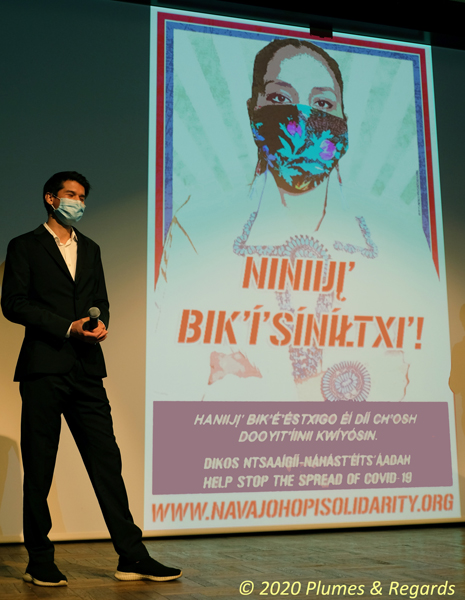 I grew up in San Diego. I moved to Austria when I was 13-years-old. I never really thought of being Native American as anything important because in America there are many, many different cultures that are constantly mixed together. But when I came to Austria, I noticed something very strange. I was one of the only brown people around, but all of the other brown people I knew were getting a lot of racism against them, and for some reason, I was not. I started to wonder why that’s the case. I couldn’t really put my finger on it, until I started to find out a little bit more about the relationship between Native Americans and the German speaking cultures.
I grew up in San Diego. I moved to Austria when I was 13-years-old. I never really thought of being Native American as anything important because in America there are many, many different cultures that are constantly mixed together. But when I came to Austria, I noticed something very strange. I was one of the only brown people around, but all of the other brown people I knew were getting a lot of racism against them, and for some reason, I was not. I started to wonder why that’s the case. I couldn’t really put my finger on it, until I started to find out a little bit more about the relationship between Native Americans and the German speaking cultures.
Does anybody here know the author Karl May? One, two, three… Cool! For those who don’t know, Karl May is the most popular German author of all time. He sold 200 million books worldwide, he has been translated into over 30 languages, and he only wrote about Native Americans. But he never met a Native American. He never went to America. But he is a good author. He wrote those stories, they are about friendship, they are about honor, they are about the Native American blood brother who has his white blood brother. So, as a result, those books have permeated the culture. Everybody in Austria, in Switzerland and Germany love Native Americans, because they only know this one, romanticized version of our story. There is no history, it is all about how we don’t feel pain, how we have honor, how we can track animals and have these almost magical powers. And there is nothing negative in our story. So, as a result, everybody loves Native Americans. It seems to be something simple to say, but you’d be surprised how far it goes.
Once I was out at night and somebody was being quite drunk, and quite aggressive towards everybody around. He was going up to different people saying “you should go out of here, you brown go back to Turkey”. He turned to me and said “you go back to where you come from, go back to Turkey”. He thought I am Turk. I told him “first of all, it’s not cool, second, I am not from Turkey, I am Native American. When I said that, he said “oh, my God! That’s so cool!” Imagine a very angry white guy, changing his complete idea about you, strictly because where you’re from! That’s the definition of racism, right? But for him, he couldn’t see it. He was all about “no, no, no, it’s positive racism. It’s good, I like you, right?
So, after this experience, I realized that racism can take many, many forms. It doesn’t have necessarily to be hatred, and it doesn’t necessarily need to be mean. So, I started to go into activism. I started tying to change the narrative of my culture in German speaking culture. Sometimes I go on TV, I talk about cultural appropriation, I explain why certain things shouldn’t be worn… But in general, I try to explain to people that our culture is more than just a costume, it’s more than just a box, that there is a deep culture complexity. And, more importantly, right now there are deep rooted problems in our society, that have to do with how we have been treated in the past, and these need to be solved.
I am not fighting for rights of Native Americans in Austria, there are not enough of them for us to have rights. But I do want to change representation. I do want to change our image. This is most clear in the recent pandemic. When the COVID pandemic hit the Navajo Nation, the Navajo Nation quickly became THE place with the highest infection rate. If you would see the Navajo Nation as a state – which I think you should – then it has the highest infection rate than any state. Many people started to ask me why is that the case. Why? It has many reasons, and all of them come basically from colonialism. 35% of households on the Navajo Nation don’t have access to running water, which means that it is incredibly difficult for people to wash their hands properly, which is absolutely necessary in this pandemic. 10% of the population doesn’t have access to electricity. Many families are living in multigenerational housing. So, they have three to four different generations living under one roof, which is a great thing, but not when you’re trying to social distance, not when you’re trying to prevent generations from staying together and possibly to getting COVID. We have high rates of diabetes. We have high rates of poverty. It’s very simple to just start thinking “maybe those Navajo are not that great”. But when you start to really look at the causes of all these problems and just see why we have such high infection rates, you realize that most of this as to do with how the Navajo Nation has negotiated with the United States over the past, well, over a century now.
In 1868, we had something called ‘The Long Walk’. There was a treaty that was made, and after scorched earth policy and many wars, conflicts, battles, many Navajos dead, we decided to come after the treaty and to negotiate with the American government and to leave our land. As a result, we lost quite a bit of our land. Later, in another treaty, we were able to negotiate quite a bit of that land back. This is one of the reasons why we have the largest Native American Reservation. We gave up a lot of our national resources. When we gave away a piece of our national resources, we negotiated, this was not just us giving things away, we negotiated for health care, or infrastructures, roads, hospitals. And none of these things ever really happened.
We still have issues with our health system. There are only around 100 hospital beds on the entire Reservation. The Reservation is about a tenth of the size of France. That’s gigantic. Having only 100 hospital beds for a population living there, of around 135,000, is quite depressing.
So, as a European, as somebody who has started to have a stronger and stronger identity of being European, and seeing part of my identity, the Navajo Nation, suffering so much, I thought to myself, “this is not O.K.” What can I do? What can I do from Europe? Solidarity is great, but solidarity is not enough. So, I decided to start a fundraiser. I wanted to collect at least 2000 euros in order to give to the Navajo Nation. It’s not a lot of money, but none the less, because of our terrific relationship with the United States government, we still had not received any emergency funds. All 50 states of the United States of America immediately had received emergency relief funds. But the Navajo Nation, as well as all of the other Native American Nations, had to wait over one and half month until they got any relief funds at all. So, the pressure was on, and I decided to do what I do best: I am a filmmaker, I work in advertising, I know how to make campaigns, I know how to make people care about something by using all those little storytelling mechanisms. And I did. But this was something that took a lot out of me personally. When you have a skill that you know how to use, and all of a sudden it has to be done for something so personal and so emotional as your tribe dying, you start to put a lot of pressure on yourself. What I was doing, I considered doing a campaign, you have a goal, you try to basically make sales, and get the people to donate. But the other day, it feels very weird interviewing your grandma, interviewing your uncle, interviewing your cousins, and try to get them to say the things you know will actually make people care. And you start to feel like an imposter, you start to feel very cynical. It wasn’t just me. Within my own family, some people started to think that I was using my family in order to generate money. Despite the fact that it was directly being used for our tribe, it created a lot of conflict with my family. That puts a lot of pressure and you really start to feel just terrible about that kind of things. I was doing PR, I was going to TV channels, I was talking to newspapers. For me, I know that when you’re trying to make people care about something, you want to make sure that you attach a face to it. In this case it was my face. Why should an Austrian care anything about Native American culture? For me, it was important, like “I am a Native American, I am also an Austrian, you should care about this because you guys read the books, you guys claim that you care about this culture, so it’s time you put your money where you mouth is.” And it worked! We were able to raise 12,000 euros, but it really took a lot out of me, out of the relationship I have with my family. By the end of it I barely could talk about it anymore although we had the money. Because of so much going on in the Navajos’ life, the insane amount of pressure for them. This is not about me, this is about my tribe. I just got an email back “Thank you for your donation”. On one hand, I am not expecting any kind of funfair, but this kind of display of solidarity that you are doing today, by sitting here, by showing that you guys care, it can actually help people. When people give me words of encouragement after all of this, when you’re feeling really terrible after this kind of things, it can actually help.
I am just somebody here, in Europe. I am fine, I live in Vienna, I am still going to have a great health system, I am still going to have food, I am still going to have a shelter. But acts of solidarity are incredibly important, and thank you guys, first of all for being here tonight.
And now, the Navajo Nation has the corona crisis, I would not say completely in check, but they’re doing a lot better. Currently, we’ve had 564 deaths, and 10,000 cases on the Reservation. It’s not good. But the hospital system is working a lot better, they fly people out, they’re doing contact tracing, we have 57 hours lock downs in the weekends. In general, we have a much better grip now than we did two months ago, on the crisis.
And that’s thanks, in part, to the people in Austria. 12,000 euros is not that much, but it is a sign and it is helpful. I always like to think that, when approaching any kind of activism, that anybody can help. I wish that I could be there, I wish I could be doing more for my tribe. The issue that many of us have is: what can we actually do? It always brings me back to the question: why did anybody donate? Why are you sitting here today? What is interesting about watching me here upon stage? I think we all need to look inside ourselves and ask ourselves our own reasons for why we do pretty much anything. I think self-reflection is really important. Often, I noticed that those who donated the most – I wrote to them, I asked them, why did you do this, why did you feel it was necessary? A lot of times the answer was that they loved reading Karl May as a child. There is no shame in reading his books. There is no shame in romanticism of a culture. As long as you take time to look underneath the surface. Those who write the books and give an interest for Native Americans, that came from a genuine interest. And if that would inspire you to do something more by donating or getting involved or participating in acts of solidarity, that’s a good thing. One of my friends asked me if it would be O.K. if his son dressed up as a Native American for Halloween. For me, it is not a bad thing, I think it’s great that that kid is interested, but as long as he does it properly. I asked him to just take five minutes to Google to what it looks like, how you can do it in a respectful way. That is not bad. Sometimes people think that they are fetishizing a culture. Yes, maybe, sometimes you are. But as long as the net benefit is better than it was before, as long as you are slowly changing the way that the culture is perceived in your culture, then you are doing something good, I guess.
I would like to thank everybody who is involved in organizing this entire wonderful night of representation of solidarity, because it means something, it actually does something.
Hartman Deetz is from Mashpee, a member of the Wampanoag tribe. He has been involved in Indigenous and Environmental movements for over 20 years. His activism mainly relies on his spirituality and his Indigenous traditions, that are based on the idea that the Earth is a living being and that it is necessary never to forget it. He has been taking part in ceremonies ever since he was 12. He has worked with the Mashpee Coalition for Native Action, took part in the Long Walk in 2008 and Idle No More in San Francisco. He has been in Standing Rock and in Indian Bayou, Louisiana, to struggle against pipelines projects that threaten the Mississippi river. He is also involved in a struggle to have the Sword removed from the Massachusetts’s flag and in another campaign aiming to have the Mashpee Reservation Act be fully implemented. Hartman is also an artist and jewelry designer.
Hartman Deetz Français
October 12, 2019
CSIA, Annual Day of Solidarity
Transcript and photos Christine Prat, CSIA
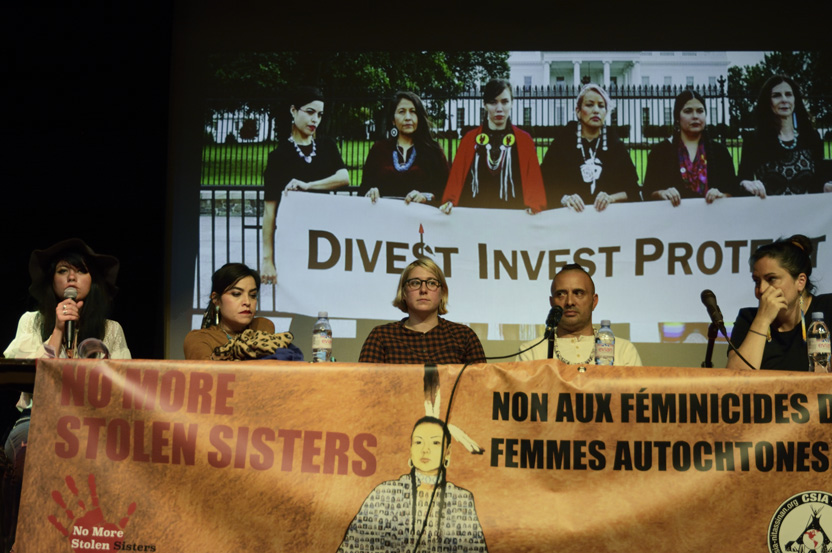 Hartman Deetz: Bonjour. [He presents himself in his own language]. Good evening. My name is Hartman Deetz, I am from Mashpee and a Wampanoag. I think the easiest is to talk about the campaigns I am working on: the state flag, and the Mashpee Reservation Reaffirmation Act. These issues can be interconnected, as many things in this world can be interconnected.
Hartman Deetz: Bonjour. [He presents himself in his own language]. Good evening. My name is Hartman Deetz, I am from Mashpee and a Wampanoag. I think the easiest is to talk about the campaigns I am working on: the state flag, and the Mashpee Reservation Reaffirmation Act. These issues can be interconnected, as many things in this world can be interconnected.
We are going to deal with some history, as most Native issues have their roots and their origins in history. Many of the wrongs done to people in the Americas, have their origins hundreds of years back. We only in recent decades started to talk about and address that these things are wrong.
I am going to address the audience. By showing hands, who has ever heard of the Wampanoag? A few. Then I am going to ask by showing hands, who has ever heard of the American Thanks Giving?
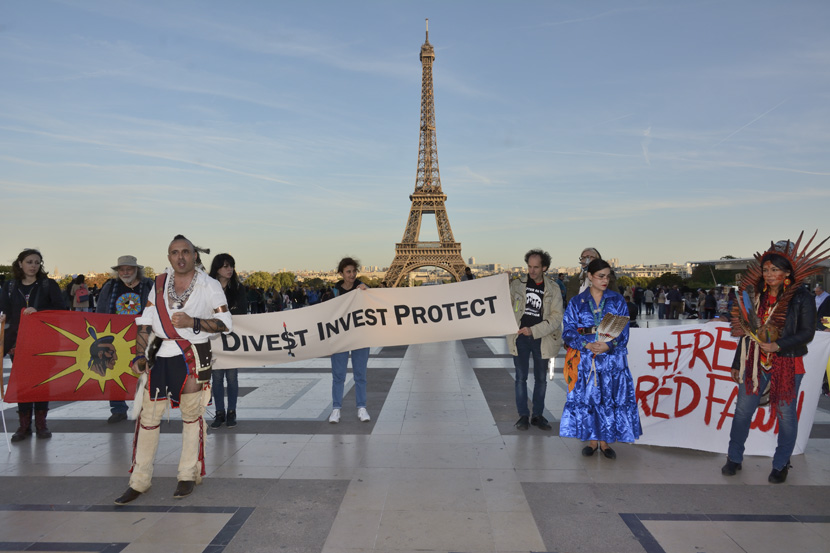 We are commonly known as the Indians, the Pilgrims and the Indians. We are “the Indians”. But we never get our own name. So, to understand what we are dealing with as Wampanoag people, we are in our original homelands, something that is not the case for many Indigenous Peoples in the Americas. My father has two acres of land, never owned by a White man ever. This is significant. In spite of this, it was not until the year 2007 that the United States Government acknowledged my People as an Indigenous Tribe. And now, they are seeking to take the last 1%, less than 1%, of our land away, in a reversal of the Trump Administration. To understand part of the situation, we have to look back to the 1600’s. We signed the 1621 Agreement with the English colonists. It said they would respect their laws and we would respect our laws, and if our folks broke our laws they would be punished by our folks, and if theirs broke their laws, they would be punished by their folks, in their jurisdiction. This treaty lasted three years. This is why the celebration of the day talks about the American origins. The Indians and the Pilgrims.
We are commonly known as the Indians, the Pilgrims and the Indians. We are “the Indians”. But we never get our own name. So, to understand what we are dealing with as Wampanoag people, we are in our original homelands, something that is not the case for many Indigenous Peoples in the Americas. My father has two acres of land, never owned by a White man ever. This is significant. In spite of this, it was not until the year 2007 that the United States Government acknowledged my People as an Indigenous Tribe. And now, they are seeking to take the last 1%, less than 1%, of our land away, in a reversal of the Trump Administration. To understand part of the situation, we have to look back to the 1600’s. We signed the 1621 Agreement with the English colonists. It said they would respect their laws and we would respect our laws, and if our folks broke our laws they would be punished by our folks, and if theirs broke their laws, they would be punished by their folks, in their jurisdiction. This treaty lasted three years. This is why the celebration of the day talks about the American origins. The Indians and the Pilgrims.
 The English folks would not deal with our women leaders. They wanted our women to send their sons, to send their brothers, to send their husbands to speak for them. We had a powerful Queen, Weetamoo, she controlled vast territories of land. The English folks made many attempts to get this land from under her feet. They tried to buy it from her sons, from her brothers. They got some of her male relatives to agree to sell. These cases were brought into the court systems, where the leadership acknowledged that only she had a claim to that land and no one else, and the right to sell it. In spite of that, the deeds were recognized by the English court system and confirmed. This sparked a war known as King Philip’s War. They named this war King Philip’s War, because the man on whom they placed the responsibility for the war, they chose to call Philip. Because they refused to bother to learn to pronounce his own name, Metacom. This war was a very violent war, the most violent war fought on New-England soil. Entire villages and towns were destroyed on both sides. And, as a conclusion of that war – we had, as Native people, allies, including the Abenaki folks – they started to sue for peace and strike treaties on victors’ terms, to return to the planting grounds and start planting in the spring again. And as people returned to their open spaces, came out of their fortresses, they were attacked. Weetamoo was killed and her body thrown in the river. Philip, Metacom, was killed in the swamps. And his head cut off and stuck on a pike. It was displayed in the center of Plymouth colony for over fifty years. And now, the flag of Massachusetts bears a sword above the head of a Native man, with the word ‘By the sword we seek peace’.
The English folks would not deal with our women leaders. They wanted our women to send their sons, to send their brothers, to send their husbands to speak for them. We had a powerful Queen, Weetamoo, she controlled vast territories of land. The English folks made many attempts to get this land from under her feet. They tried to buy it from her sons, from her brothers. They got some of her male relatives to agree to sell. These cases were brought into the court systems, where the leadership acknowledged that only she had a claim to that land and no one else, and the right to sell it. In spite of that, the deeds were recognized by the English court system and confirmed. This sparked a war known as King Philip’s War. They named this war King Philip’s War, because the man on whom they placed the responsibility for the war, they chose to call Philip. Because they refused to bother to learn to pronounce his own name, Metacom. This war was a very violent war, the most violent war fought on New-England soil. Entire villages and towns were destroyed on both sides. And, as a conclusion of that war – we had, as Native people, allies, including the Abenaki folks – they started to sue for peace and strike treaties on victors’ terms, to return to the planting grounds and start planting in the spring again. And as people returned to their open spaces, came out of their fortresses, they were attacked. Weetamoo was killed and her body thrown in the river. Philip, Metacom, was killed in the swamps. And his head cut off and stuck on a pike. It was displayed in the center of Plymouth colony for over fifty years. And now, the flag of Massachusetts bears a sword above the head of a Native man, with the word ‘By the sword we seek peace’.
In 2018, 150 acres, in the very place where Weetamoo’s landholdings were, the center of the lands that sparked the war of King Philip’s War, became the sticking point as they chose to use this land to reverse the decision on our acknowledgement of being a Native People, of being a tribe, of being sovereign. They said we have no connection to that land historically. This is the justification they use now to strip us of our inherent right on the last less than 1% of our land.
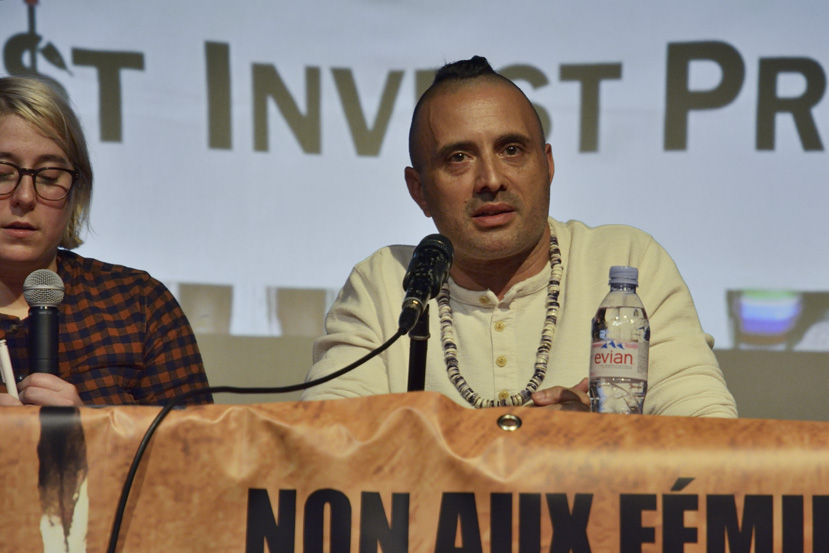 My tribe, my community has about 3000 people, and about 300 acres. That’s about 400 m² in one acre. We have about 10 people per acre. How are we expected to continue to exist as Wampanoag people in our own land? If we don’t have a place to be? How can we be Mashpee people, if we are not next to the Mashpee pond? How can we be Mashpee people, if we are not able to get to the Mashpee river? These bodies of water define us. They are what give us our identity as Mashpee people. We are faced with very dire need to see some justice. We have been struggling for hundreds of years, through changes of laws, through England, through the American Revolution. Under England, we were praying towns, the American Revolution came and we became Indian Districts, and then we were incorporated into a town, an official town, and then recognized as a state tribe, and then eventually recognized as a Federal Tribe. And now, they have changed the rules once again. For the United States, we are Indians when it suits them. And we are not when it does not. So, we are hoping to see some pressure from the world, to get the United States to acknowledge the Rights of the Native Peoples that they celebrate every November, in their creation myth, to have a place to be and exist.
My tribe, my community has about 3000 people, and about 300 acres. That’s about 400 m² in one acre. We have about 10 people per acre. How are we expected to continue to exist as Wampanoag people in our own land? If we don’t have a place to be? How can we be Mashpee people, if we are not next to the Mashpee pond? How can we be Mashpee people, if we are not able to get to the Mashpee river? These bodies of water define us. They are what give us our identity as Mashpee people. We are faced with very dire need to see some justice. We have been struggling for hundreds of years, through changes of laws, through England, through the American Revolution. Under England, we were praying towns, the American Revolution came and we became Indian Districts, and then we were incorporated into a town, an official town, and then recognized as a state tribe, and then eventually recognized as a Federal Tribe. And now, they have changed the rules once again. For the United States, we are Indians when it suits them. And we are not when it does not. So, we are hoping to see some pressure from the world, to get the United States to acknowledge the Rights of the Native Peoples that they celebrate every November, in their creation myth, to have a place to be and exist.
Vanessa Joseph et Clarisse Da Silva
Jeunesse Autochtone de Guyane
12 octobre 2019
Journée Annuelle de Solidarité, CSIA-nitassinan
Transcription et photos Christine Prat
Vanessa Joseph et Clarisse Da Silva, représentantes de la Jeunesse Autochtone de Guyane, ont participé à une table ronde, modérée par la journaliste Anne Pastor, au cours de la Journée Annuelle de Solidarité du CSIA-nitassinan, cette année consacrée au thème des Femmes Autochtones en lutte.
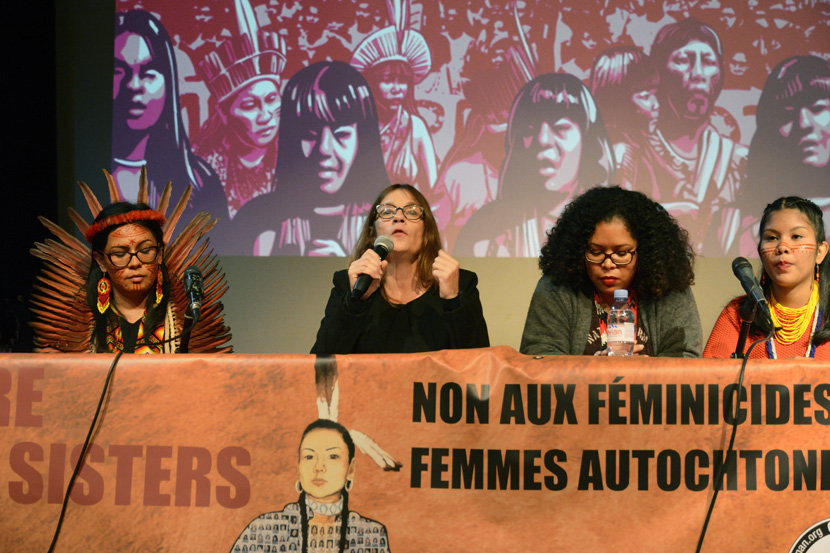 Anne Pastor : […] En Guyane avec le fameux projet de Montagne d’Or, qui pourrait affecter de manière définitive le territoire, ce territoire français.
Anne Pastor : […] En Guyane avec le fameux projet de Montagne d’Or, qui pourrait affecter de manière définitive le territoire, ce territoire français.
Vanessa Joseph : C’est un projet qui est « abandonné », avec de gros guillemets…
Anne Pastor : Justement, avec de gros guillemets. Alors, est-ce qu’il y a des gens qui ne connaissent pas encore le projet ? Vous voulez un petit rappel, sur le projet ?
Vanessa : Le projet Montagne d’Or est un projet de méga mine, donc large comme deux stades de France, suffisamment profond pour y mettre la Tour Eiffel sans qu’on en voie le sommet. Ils avaient l’intention de le faire en Guyane. Finalement, la population s’y est opposée, en tous cas une partie de la population. La pression nationale a fait que le Président est revenu sur sa décision et a décidé de mettre fin à ce projet, en tous cas le projet en l’état. A l’ONU, il y a quelques semaines, ils ont confirmé l’abandon de ce projet. Mais en fait, c’est plutôt une transformation du projet. Le projet en lui-même n’est pas validé, je pense dans sa dimension, dans tout ce qui avait été prévu pour le fonctionnement de cette mine. Aujourd’hui, on nous propose d’autres types de mines, des mines plus ‘vertes’, les mines les plus propres possibles, sachant qu’il n’y aura jamais de mine propre, elle rejettera toujours des déchets. Une mine reste une mine. Après, il y a des gens qui travaillent dans ce domaine, on verra où tout cela va nous mener. En tous cas, le projet Montagne d’Or n’est pas abandonné, il est juste abandonné en l’état, il va juste être modifié, c’est tout ce qu’il faut retenir.
Anne Pastor : D’autant que votre nature est déjà malmenée…
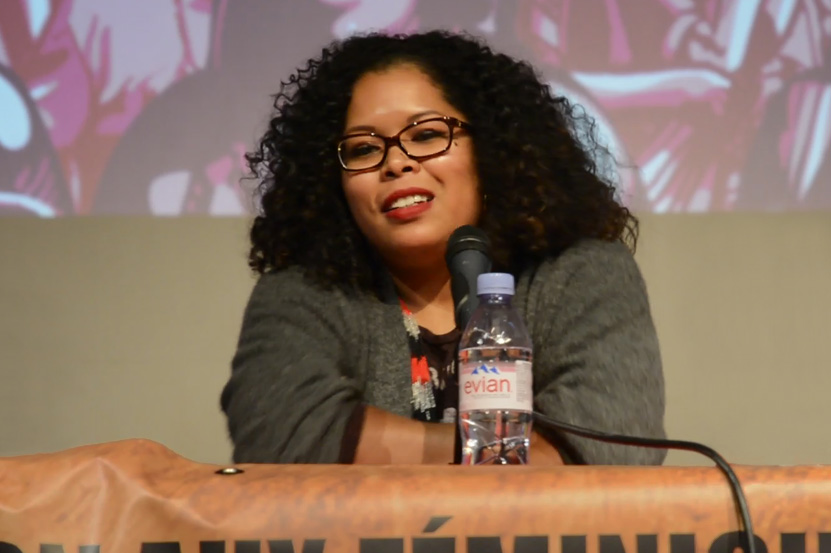 Vanessa : Oui, en tous cas, je suis sûre qu’il y a aussi des choses dont nous ne sommes pas au courant. Entre le bois, l’or et d’autres minerais qui font l’objet de recherches actuellement… Et il y a aussi l’orpaillage illégal, donc l’utilisation du mercure par les garimpeiros, des orpailleurs illégaux qui sont d’origine brésilienne pour la plupart. Il y a aussi des Surinamiens, il y a aussi des Français qui y participent. Donc, il y a utilisation de mercure, qui est rejeté dans les eaux de Guyane, donc les principaux fleuves sont touchés.
Vanessa : Oui, en tous cas, je suis sûre qu’il y a aussi des choses dont nous ne sommes pas au courant. Entre le bois, l’or et d’autres minerais qui font l’objet de recherches actuellement… Et il y a aussi l’orpaillage illégal, donc l’utilisation du mercure par les garimpeiros, des orpailleurs illégaux qui sont d’origine brésilienne pour la plupart. Il y a aussi des Surinamiens, il y a aussi des Français qui y participent. Donc, il y a utilisation de mercure, qui est rejeté dans les eaux de Guyane, donc les principaux fleuves sont touchés.
Anne Pastor : Ça a quand même des conséquences sur la chasse, la pêche, et forcément sur la santé des Amérindiens et des enfants.
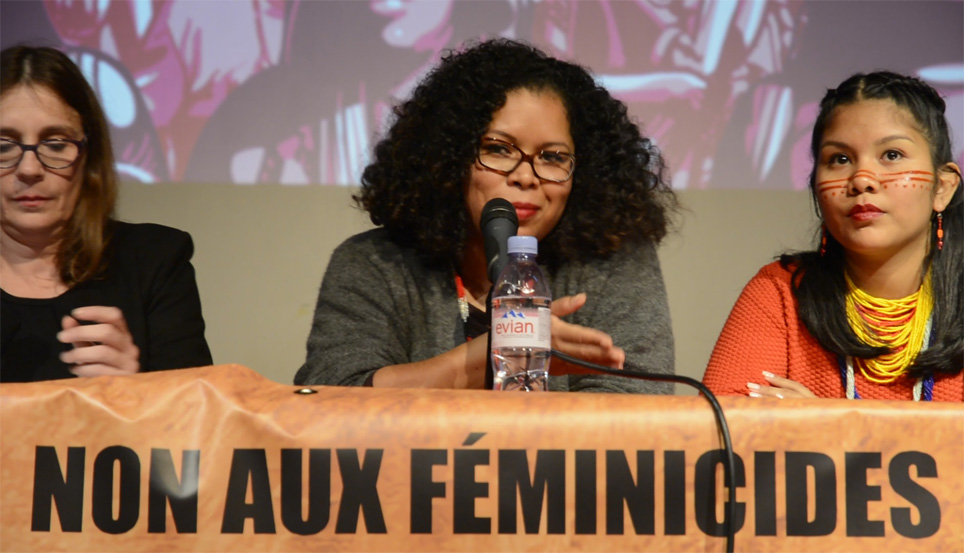 Vanessa : La vie dans les villages tout court aussi. On sait très bien que la consommation de mercure porte atteinte à la santé de la personne, que ce soit des adultes ou des enfants, et des enfants à naître. L’orpaillage illégal amène aussi toutes sortes de trafics, des trafics d’humains, de la prostitution. Il n’est pas rare de voir des cas de prostitution dans nos forêts, des assassinats, des échanges de tirs avec les villages. J’ai pu le voir dans un reportage il y a quelques années, ils appelaient la Guyane le ‘Far West français’. Et dans l’intérieur, il est vrai que ça y ressemble plus ou moins. Pas totalement, ce n’est pas exactement ce qu’on essaie de vous faire croire, mais quand on vous dit qu’il y a des échanges de tirs, que certains villages vivent dans la crainte, c’est vrai.
Vanessa : La vie dans les villages tout court aussi. On sait très bien que la consommation de mercure porte atteinte à la santé de la personne, que ce soit des adultes ou des enfants, et des enfants à naître. L’orpaillage illégal amène aussi toutes sortes de trafics, des trafics d’humains, de la prostitution. Il n’est pas rare de voir des cas de prostitution dans nos forêts, des assassinats, des échanges de tirs avec les villages. J’ai pu le voir dans un reportage il y a quelques années, ils appelaient la Guyane le ‘Far West français’. Et dans l’intérieur, il est vrai que ça y ressemble plus ou moins. Pas totalement, ce n’est pas exactement ce qu’on essaie de vous faire croire, mais quand on vous dit qu’il y a des échanges de tirs, que certains villages vivent dans la crainte, c’est vrai.
Anne Pastor : Alors, effectivement, un climat d’insécurité et de violence qu’on trouve aussi, malheureusement, au Brésil, en Amazonie…
[Intervention de Daiara Tukano, voir article]
Anne Pastor : Est-ce que vous voulez rebondir sur la dernière phrase de Patricia Gualinga ? Qui dit que ce concept de forêt vivante pourrait être une alternative, en tous cas une idée à résoudre les conséquences du changement climatique, et en ce sens, le message qu’elle prononce à chaque conférence, est un peu celui-là. Aujourd’hui elle s’adresse au monde entier. En tous cas, on voit bien que, à travers l’importance des Droits de la Nature, de la Terre, et finalement toute la question toute la question identitaire qui est posée. Et, en particulier, pour vous, les Kali’na, vous qui êtes là depuis près de 10 000 ans sur votre terre d’origine, qui essayez de continuer à vivre avec votre mode de vie, votre langue, vos croyances, vous êtes engagés depuis quelques décennies dans un processus de revendications territoriales, de reconquête, même, de la terre,
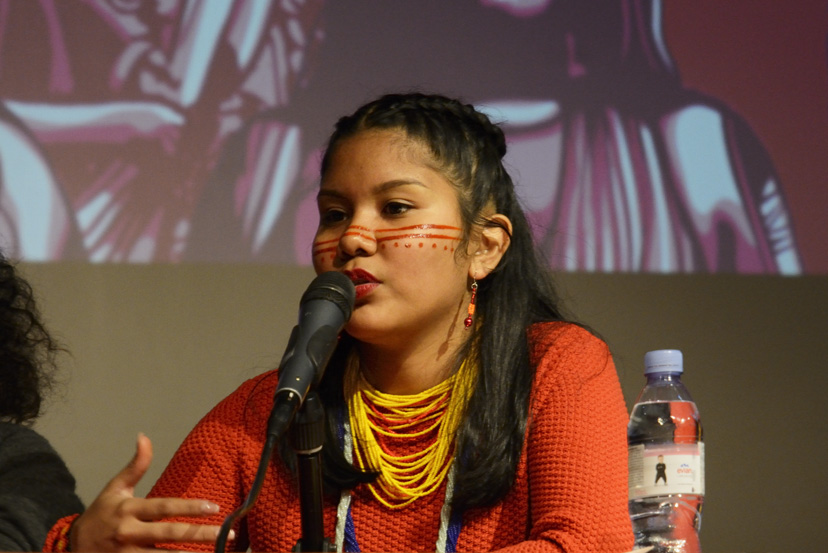 Clarisse Da Silva : Là, on parle beaucoup de droit à la terre, de la relation avec la terre, donc c’est un sujet sensible en ce moment. Je pense que l’on va plus parler de la relation que nous avons avec la tradition et les cultures, donc la question identitaire en soi. Je suis artiste Kali’na, dans mon travail artistique je traite beaucoup de la question la question identitaire, la question de l’Autochtonie, de la relation que les jeunes ont avec les traditions, les coutumes, etc. Aujourd’hui, il faut savoir qu’en Guyane il y a une perdition de la culture. Je fais partie de cette génération qui n’a pas grandi avec la culture. C’est la conséquence des ‘homes Amérindiens’ – les Pensionnats. C’était une éducation religieuse obligatoire. Ma mère y est allée, toutes mes tantes et mes tontons y sont allés. Il y avait une évangélisation, une éducation à la française, il fallait chanter ‘La Marseillaise’, les langues Autochtones étaient interdites, et c’était toujours le cas il y a quelques années, c’est ce que nous avions dénoncé également. En internat ou en famille d’accueil, c’était pareil. Je pense, qu’inconsciemment, ma mère regardait ce processus selon lequel il ne fallait pas parler notre langue, donc nous avons grandi avec ça, nous ne parlons pas la langue Kali’na. Maintenant, nous faisons un travail là-dessus, nous essayons d’apprendre de plus en plus quelques mots, quelques phrases, ce qui n’est déjà pas mal. Mais avec le choc des sociétés, le mode de vie à l’occidentale, le développement, je ne suis pas en tenue traditionnelle, je porte des Airforce One, un pull à la mode, je parle français, je vais à l’école. Donc ma relation avec la tradition est un peu compliquée, je n’ai pas été tout de suite intéressée par tout ce qui était culturel. J’ai commencé à me revendiquer à l’âge de treize ans, puisque c’est quand j’ai commencé mon travail artistique. Ensuite, lorsqu’il y a eu des mouvements sociaux et une très forte revendication identitaire, ça a engagé les jeunes, d’où la visibilité de la Jeunesse Autochtone de Guyane. Maintenant nous essayons de nous réapproprier toute cette relation. Aujourd’hui encore il y a très peu de jeunes qui font l’effort d’aller en forêt, ils sont très peu intéressés. J’ai été l’une des premières jeunes qui suis allée en forêt avec Jean-Jacques Agevi, qui est un très grand artiste Kali’na, qui fait un travail de réappropriation. Et il faut ensuite pouvoir garder en tête et transmettre aux jeunes tout ce travail culturel. C’est vrai qu’aujourd’hui c’est très compliqué, il y a encore des histoires à apprendre, en tant que jeune, j’en apprend tous les jours.
Clarisse Da Silva : Là, on parle beaucoup de droit à la terre, de la relation avec la terre, donc c’est un sujet sensible en ce moment. Je pense que l’on va plus parler de la relation que nous avons avec la tradition et les cultures, donc la question identitaire en soi. Je suis artiste Kali’na, dans mon travail artistique je traite beaucoup de la question la question identitaire, la question de l’Autochtonie, de la relation que les jeunes ont avec les traditions, les coutumes, etc. Aujourd’hui, il faut savoir qu’en Guyane il y a une perdition de la culture. Je fais partie de cette génération qui n’a pas grandi avec la culture. C’est la conséquence des ‘homes Amérindiens’ – les Pensionnats. C’était une éducation religieuse obligatoire. Ma mère y est allée, toutes mes tantes et mes tontons y sont allés. Il y avait une évangélisation, une éducation à la française, il fallait chanter ‘La Marseillaise’, les langues Autochtones étaient interdites, et c’était toujours le cas il y a quelques années, c’est ce que nous avions dénoncé également. En internat ou en famille d’accueil, c’était pareil. Je pense, qu’inconsciemment, ma mère regardait ce processus selon lequel il ne fallait pas parler notre langue, donc nous avons grandi avec ça, nous ne parlons pas la langue Kali’na. Maintenant, nous faisons un travail là-dessus, nous essayons d’apprendre de plus en plus quelques mots, quelques phrases, ce qui n’est déjà pas mal. Mais avec le choc des sociétés, le mode de vie à l’occidentale, le développement, je ne suis pas en tenue traditionnelle, je porte des Airforce One, un pull à la mode, je parle français, je vais à l’école. Donc ma relation avec la tradition est un peu compliquée, je n’ai pas été tout de suite intéressée par tout ce qui était culturel. J’ai commencé à me revendiquer à l’âge de treize ans, puisque c’est quand j’ai commencé mon travail artistique. Ensuite, lorsqu’il y a eu des mouvements sociaux et une très forte revendication identitaire, ça a engagé les jeunes, d’où la visibilité de la Jeunesse Autochtone de Guyane. Maintenant nous essayons de nous réapproprier toute cette relation. Aujourd’hui encore il y a très peu de jeunes qui font l’effort d’aller en forêt, ils sont très peu intéressés. J’ai été l’une des premières jeunes qui suis allée en forêt avec Jean-Jacques Agevi, qui est un très grand artiste Kali’na, qui fait un travail de réappropriation. Et il faut ensuite pouvoir garder en tête et transmettre aux jeunes tout ce travail culturel. C’est vrai qu’aujourd’hui c’est très compliqué, il y a encore des histoires à apprendre, en tant que jeune, j’en apprend tous les jours.
Anne Pastor : Alors il faut quand même préciser, pour ceux qui ne connaissent pas bien ce sujet-là, c’est-à-dire qu’effectivement, avec la scolarisation massive, en particulier pour ceux qui étaient à l’intérieur, les 3000 Wayana ou Wayampi, ils devaient quitter, en fait, leur famille dès l’âge de onze ans pour aller sur le littoral, donc ils ne pouvaient pas suivre l’enseignement traditionnel, et, au bout du compte, c’est une génération qui est aussi en perte de repères. On parle beaucoup de drogue, d’alcool, mais aussi et surtout, et vous en avez beaucoup parlé, de taux de suicides absolument énormes, de vingt fois supérieurs à la moyenne nationale. Je crois que depuis le mois de janvier, dans la communauté Wayana, ils ne sont que 1500, et il y a quand même eu 13 suicides. C’est absolument énorme et, effectivement, peut-être que cette reconnexion, et ce travail que vous faites à travers l’art, permet de retrouver un peu toutes ces valeurs traditionnelles et de savoir qui ont est.
 Clarisse : Effectivement. Aujourd’hui, la particularité de notre génération c’est qu’elle vit entre deux mondes et elle doit faire avec ces deux mondes. C’est-à-dire que nous devons pouvoir avancer avec notre identité, donc avec les coutumes, pour garder une connexion avec nos Anciens, avoir une connexion avec notre identité. Mais il faut aussi savoir s’intégrer, on parle beaucoup d’adaptation, c’est ce que nous faisons depuis des années. C’est souvent difficile, on le voit avec les suicides de jeunes Amérindiens. Ils sont ne sont pas habitués à la vie en ville, ils sont complètement en terre inconnue. C’est quelque chose que j’ai connu moi-même, je vis depuis un an en métropole, c’était très compliqué. C’est un autre mode de vie, nous sommes loin de la famille, loin du cocon familial. Heureusement, j’avais mes sœurs avec moi. Mais imaginez des jeunes qui partent tous seuls, c’est déjà difficile à Cayenne, alors imaginez, en France métropolitaine ! Et on parle aussi beaucoup de discrimination. Moi, j’étais en prépa artistique, j’ai voulu développer tout ce travail artistique autour de la culture et de la tradition, et c’est vrai qu’au cours de cette année, même si je me suis rendu compte, un peu trop tard à mon goût, ce qui a développé mon mal-être c’est le fait qu’on ait voulu contrôler mes messages, qu’on ait voulu contrôler cette quête identitaire. Certaines fois, on ne voulait pas que je fasse certaines choses, on voulait que je retire des symboles Kali’na de certaines productions, on voulait complètement déformer des dessins. C’était déjà assez violent, donc, si moi je l’ai vécu comme ça, et pourtant il y a pire, on peut se demander comment ça doit être pour des jeunes qui sont sans repères.
Clarisse : Effectivement. Aujourd’hui, la particularité de notre génération c’est qu’elle vit entre deux mondes et elle doit faire avec ces deux mondes. C’est-à-dire que nous devons pouvoir avancer avec notre identité, donc avec les coutumes, pour garder une connexion avec nos Anciens, avoir une connexion avec notre identité. Mais il faut aussi savoir s’intégrer, on parle beaucoup d’adaptation, c’est ce que nous faisons depuis des années. C’est souvent difficile, on le voit avec les suicides de jeunes Amérindiens. Ils sont ne sont pas habitués à la vie en ville, ils sont complètement en terre inconnue. C’est quelque chose que j’ai connu moi-même, je vis depuis un an en métropole, c’était très compliqué. C’est un autre mode de vie, nous sommes loin de la famille, loin du cocon familial. Heureusement, j’avais mes sœurs avec moi. Mais imaginez des jeunes qui partent tous seuls, c’est déjà difficile à Cayenne, alors imaginez, en France métropolitaine ! Et on parle aussi beaucoup de discrimination. Moi, j’étais en prépa artistique, j’ai voulu développer tout ce travail artistique autour de la culture et de la tradition, et c’est vrai qu’au cours de cette année, même si je me suis rendu compte, un peu trop tard à mon goût, ce qui a développé mon mal-être c’est le fait qu’on ait voulu contrôler mes messages, qu’on ait voulu contrôler cette quête identitaire. Certaines fois, on ne voulait pas que je fasse certaines choses, on voulait que je retire des symboles Kali’na de certaines productions, on voulait complètement déformer des dessins. C’était déjà assez violent, donc, si moi je l’ai vécu comme ça, et pourtant il y a pire, on peut se demander comment ça doit être pour des jeunes qui sont sans repères.
Anne Pastor : Finalement, ce que vous revendiquez c’est une identité propre, un droit aussi à la différence, d’être vous-même dans cet Etat français…
Clarisse : Oui !
Anne Pastor : Oui, mais il faut quand même le réaffirmer, parce que ce n’est pas forcément évident. Quand on suit, par exemple, des cours au collège et qu’on entend parler de TGV, d’autoroutes, on a l’impression qu’effectivement, toute l’identité Autochtone est totalement mise à part. exclue…
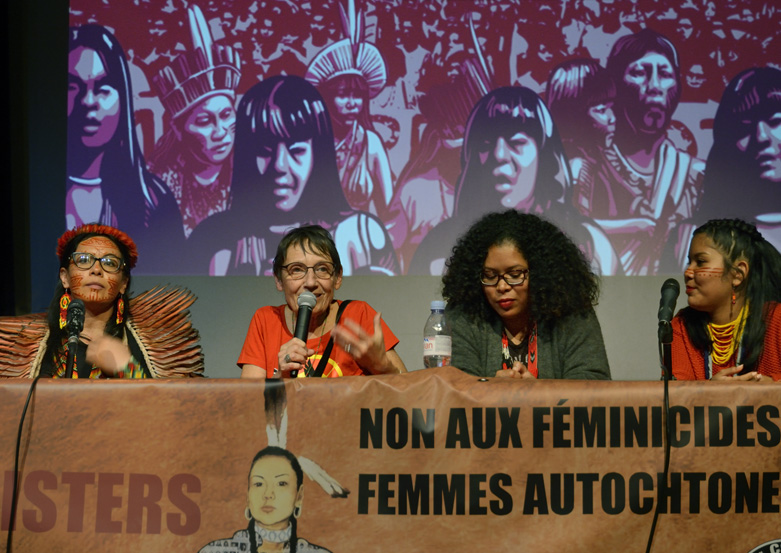 Clarisse : En fait, en Guyane, c’est autre chose. C’est une terre pluriculturelle, tout le monde vit en communauté. Nous sommes conscients de ce qu’il y a des Peuples Autochtones, qu’il y a des Peuples Bushinengués, des communautés créoles, haïtiennes, brésiliennes, etc. Nous vivons au quotidien avec ces différences, mais nous ne les voyons pas, ces différences. Un sujet sur lequel je travaille beaucoup aussi, c’est la manière dont l’ancienne génération vivait la Guyane et dans laquelle, maintenant, la nouvelle génération grandit. Avant, on voyait qu’il y avait d’un côté les Créoles, les Amérindiens de l’autre. Aujourd’hui, c’est un peu différent. Nous allons à l’école avec tout le monde, dans ma classe il y a des Créoles et des Brésiliens, des Bushinengués et des Hmong, et nous ne voyons pas nos différences. Je suis amie avec des Créoles, nous parlons facilement des problèmes politiques. Nous n’avons pas la même vision que la génération d’avant. Nous avons plus de facilités pour communiquer, et nous disons souvent que c’est quand la nouvelle génération va reprendre le flambeau que ça va mieux se passer. Et à l’école, j’ai toujours eu la chance d’avoir des professeurs qui nous faisaient des cours sur l’histoire de Guyane, qui nous poussaient à valoriser nos différences, valoriser nos cultures, donc, sur ce plan, nous avons été très bien encadrés. Je parle plus de la France métropolitaine où c’est difficile, mais en Guyane on commence à faire un travail de valorisation des cultures et je trouve que c’est une bonne chose, car en Guyane je ne me sens pas forcément mal. Ce n’est pas comme en métropole.
Clarisse : En fait, en Guyane, c’est autre chose. C’est une terre pluriculturelle, tout le monde vit en communauté. Nous sommes conscients de ce qu’il y a des Peuples Autochtones, qu’il y a des Peuples Bushinengués, des communautés créoles, haïtiennes, brésiliennes, etc. Nous vivons au quotidien avec ces différences, mais nous ne les voyons pas, ces différences. Un sujet sur lequel je travaille beaucoup aussi, c’est la manière dont l’ancienne génération vivait la Guyane et dans laquelle, maintenant, la nouvelle génération grandit. Avant, on voyait qu’il y avait d’un côté les Créoles, les Amérindiens de l’autre. Aujourd’hui, c’est un peu différent. Nous allons à l’école avec tout le monde, dans ma classe il y a des Créoles et des Brésiliens, des Bushinengués et des Hmong, et nous ne voyons pas nos différences. Je suis amie avec des Créoles, nous parlons facilement des problèmes politiques. Nous n’avons pas la même vision que la génération d’avant. Nous avons plus de facilités pour communiquer, et nous disons souvent que c’est quand la nouvelle génération va reprendre le flambeau que ça va mieux se passer. Et à l’école, j’ai toujours eu la chance d’avoir des professeurs qui nous faisaient des cours sur l’histoire de Guyane, qui nous poussaient à valoriser nos différences, valoriser nos cultures, donc, sur ce plan, nous avons été très bien encadrés. Je parle plus de la France métropolitaine où c’est difficile, mais en Guyane on commence à faire un travail de valorisation des cultures et je trouve que c’est une bonne chose, car en Guyane je ne me sens pas forcément mal. Ce n’est pas comme en métropole.
Anne Pastor : Effectivement. Et puis il y a des projets qui sont initiés, comme le projet SAWA [Savoirs Autochtones Wayana et Apalaï], qui est un projet qui a été initié par des anthropologues, le Quai Branly avec les Wayana, qui effectivement concerne leurs objets, parce que malheureusement, ces cinquante dernières années tous leurs objets ont disparu, ont été volés ou ont été vendus. Et donc, aujourd’hui, ils vont les voir dans les musées et font tout un travail de réappropriation de leur culture et de leur identité.
[Intervention de Daiara Tukano, voir article]


